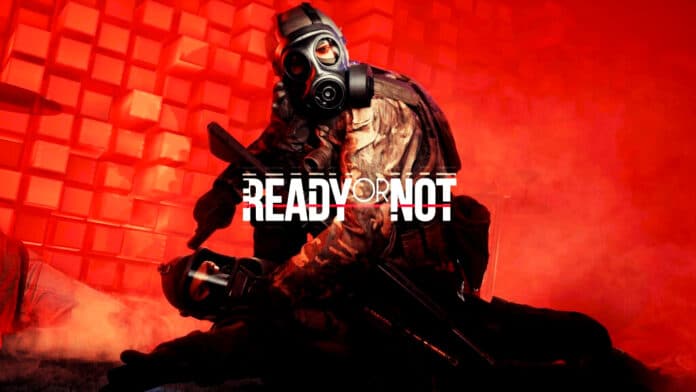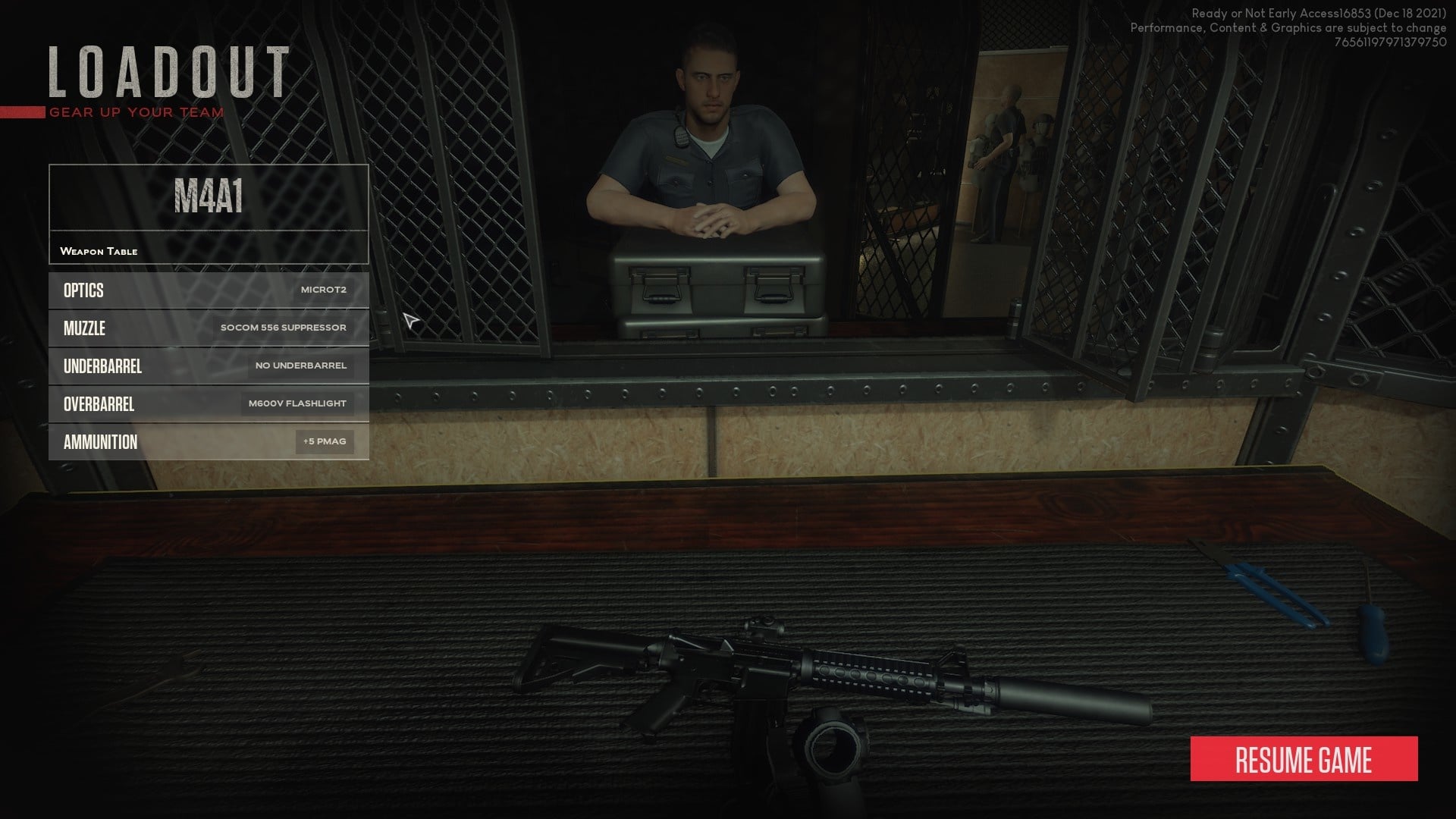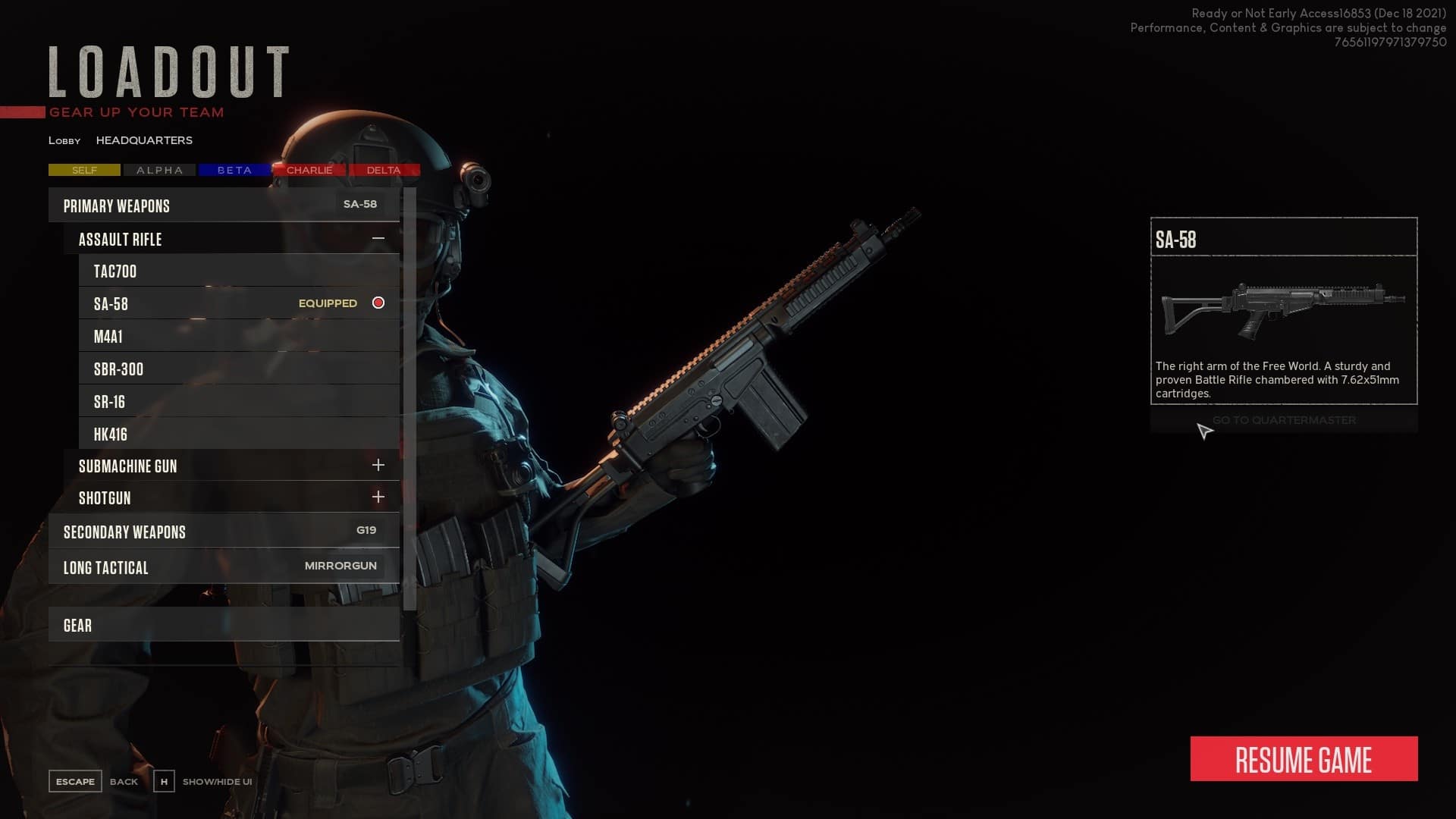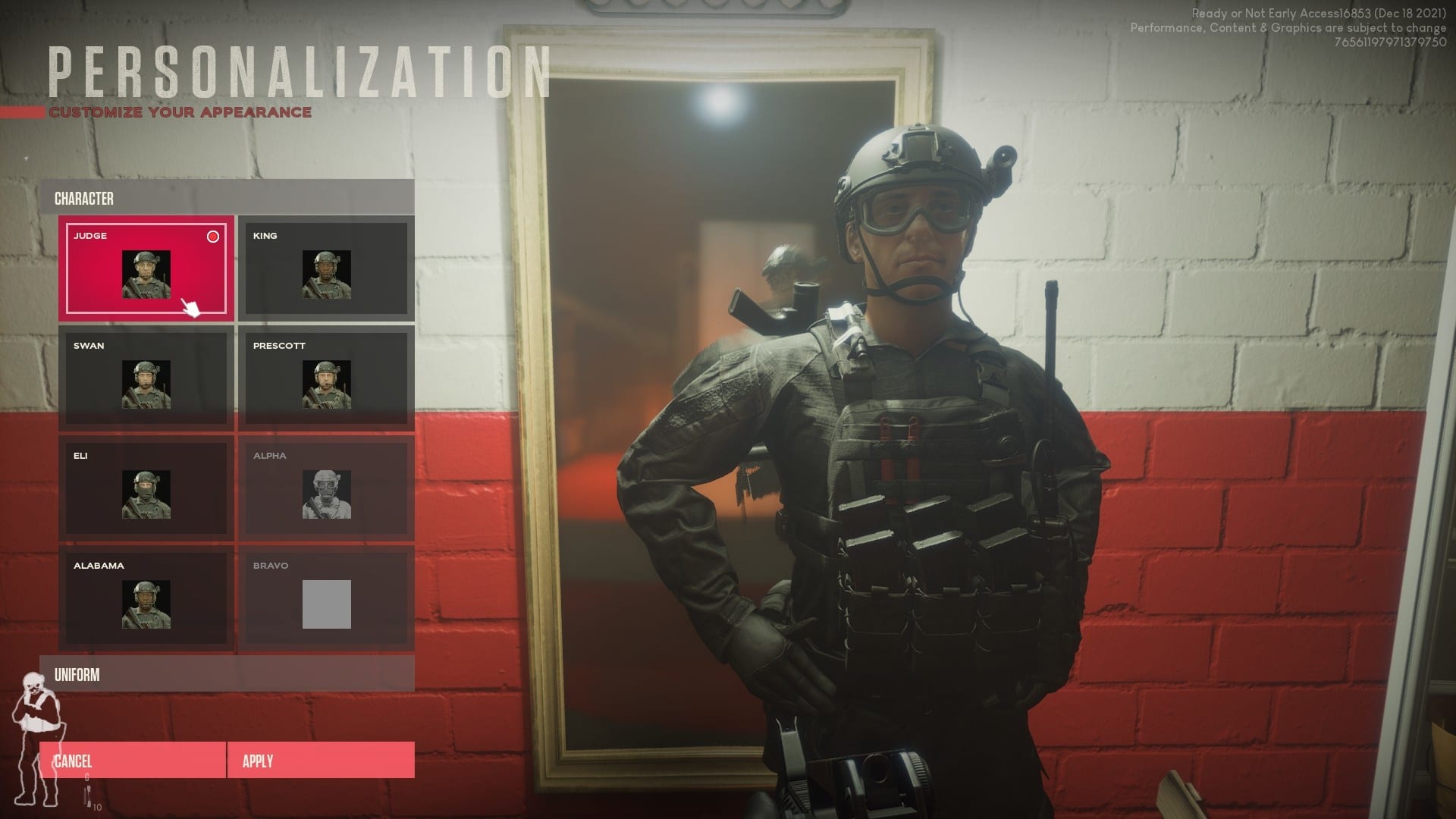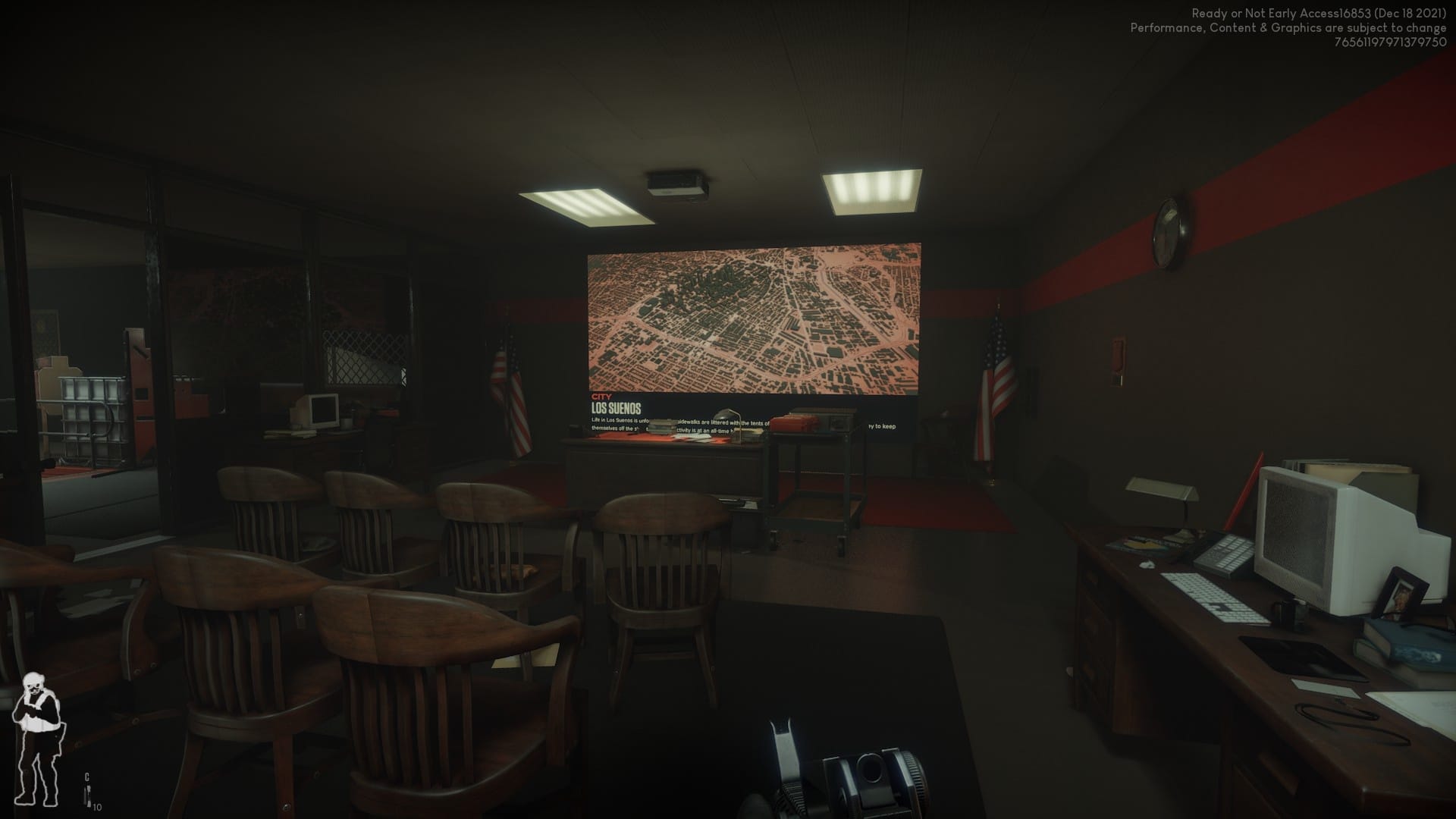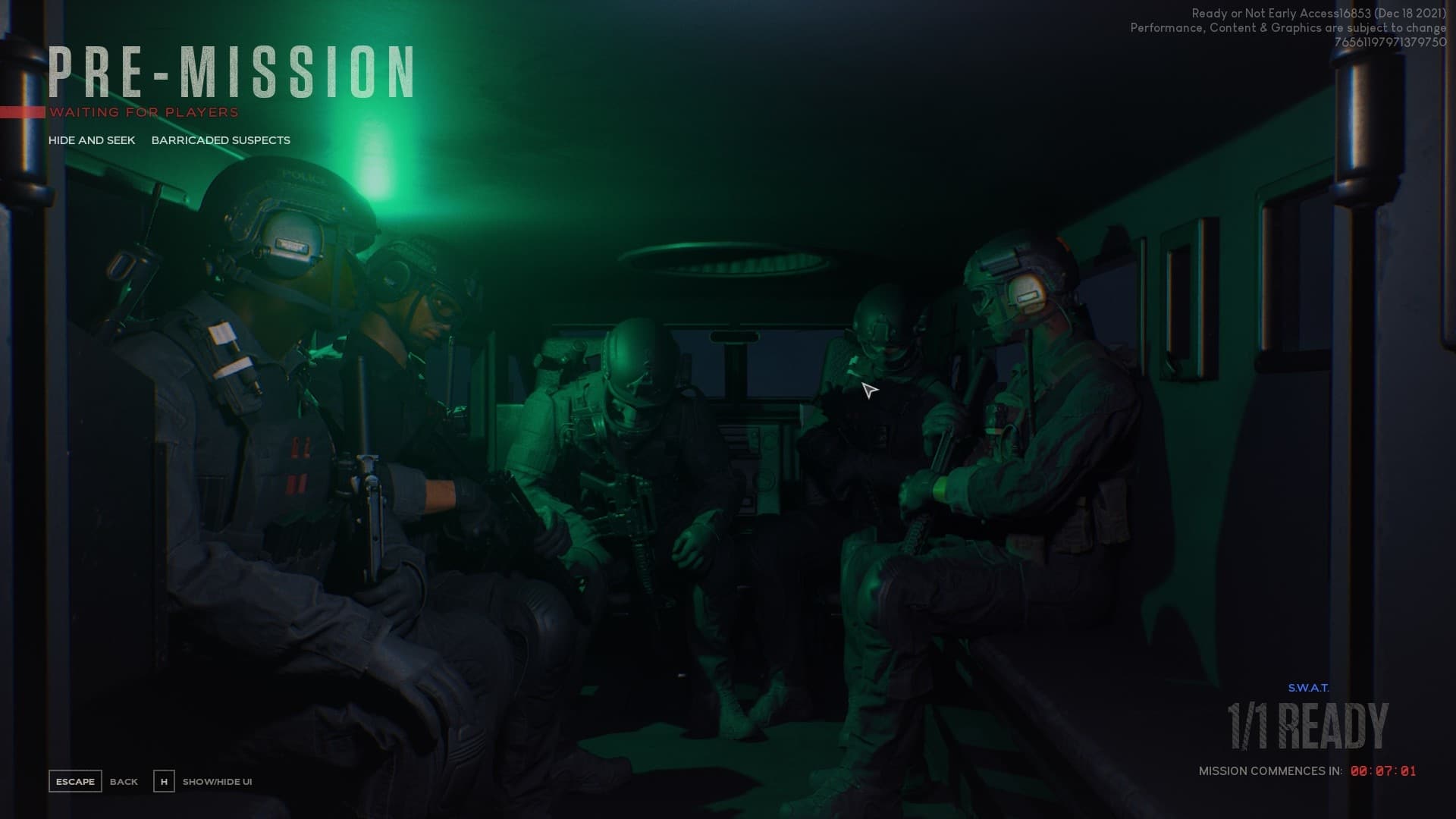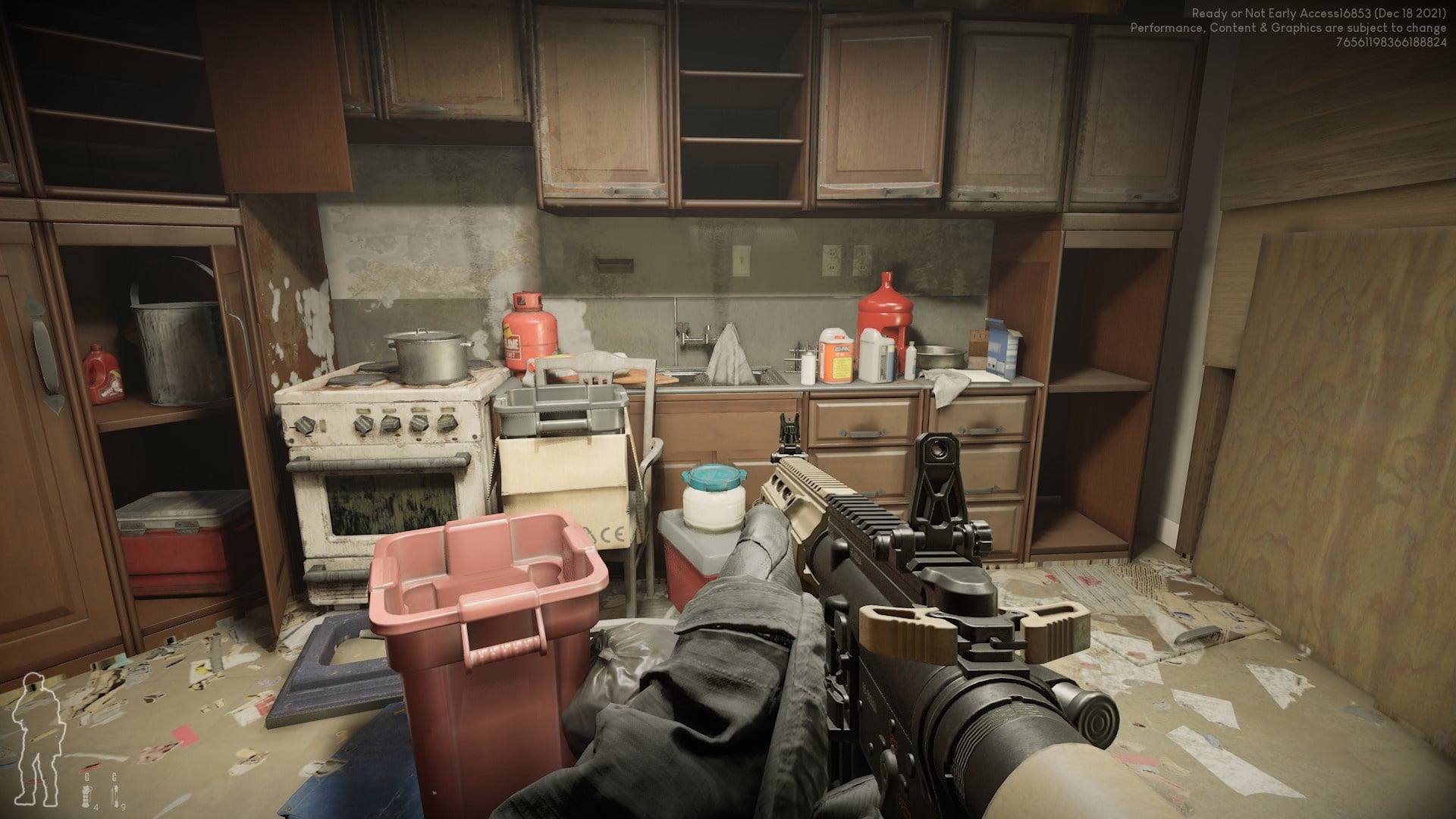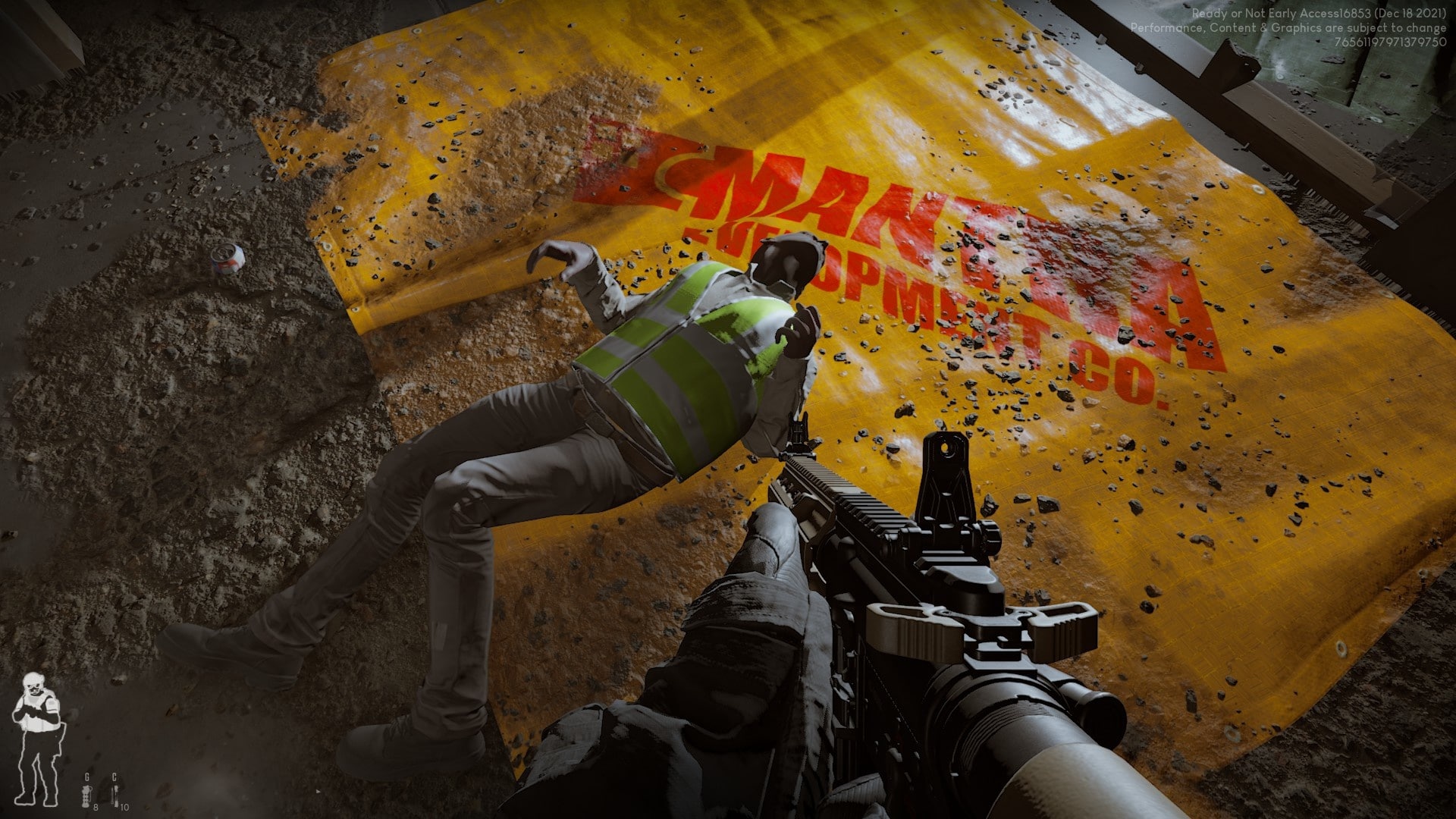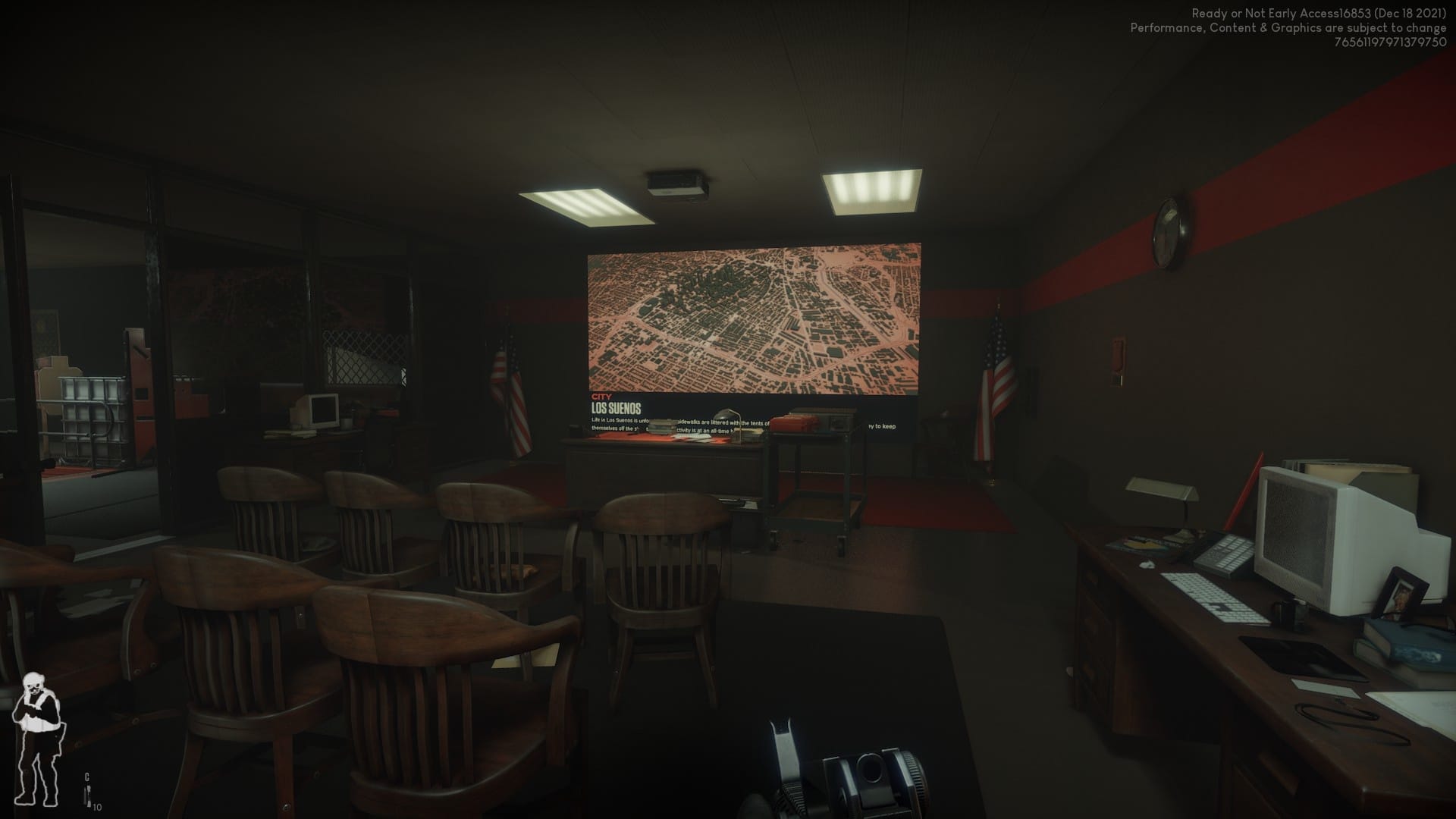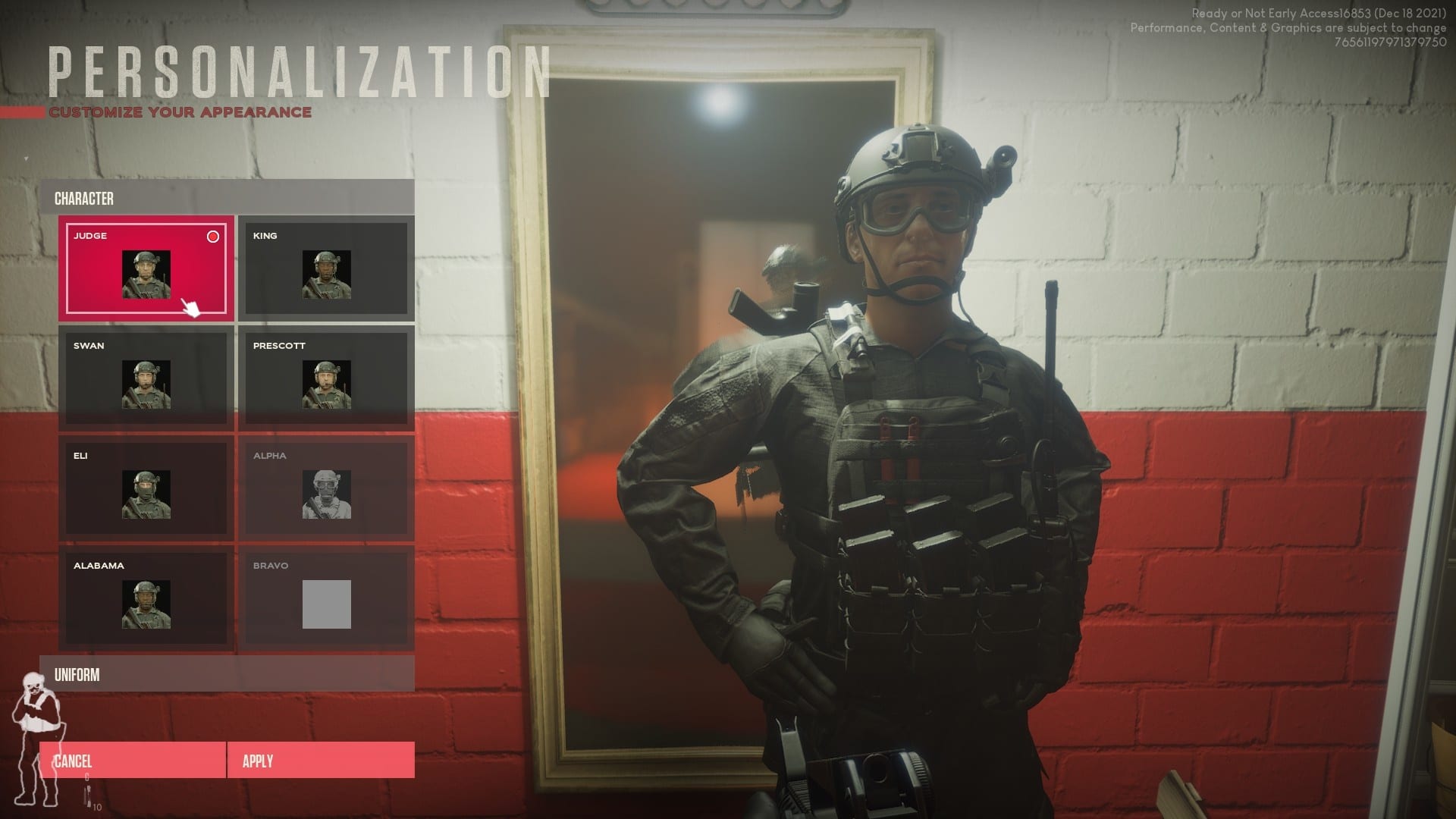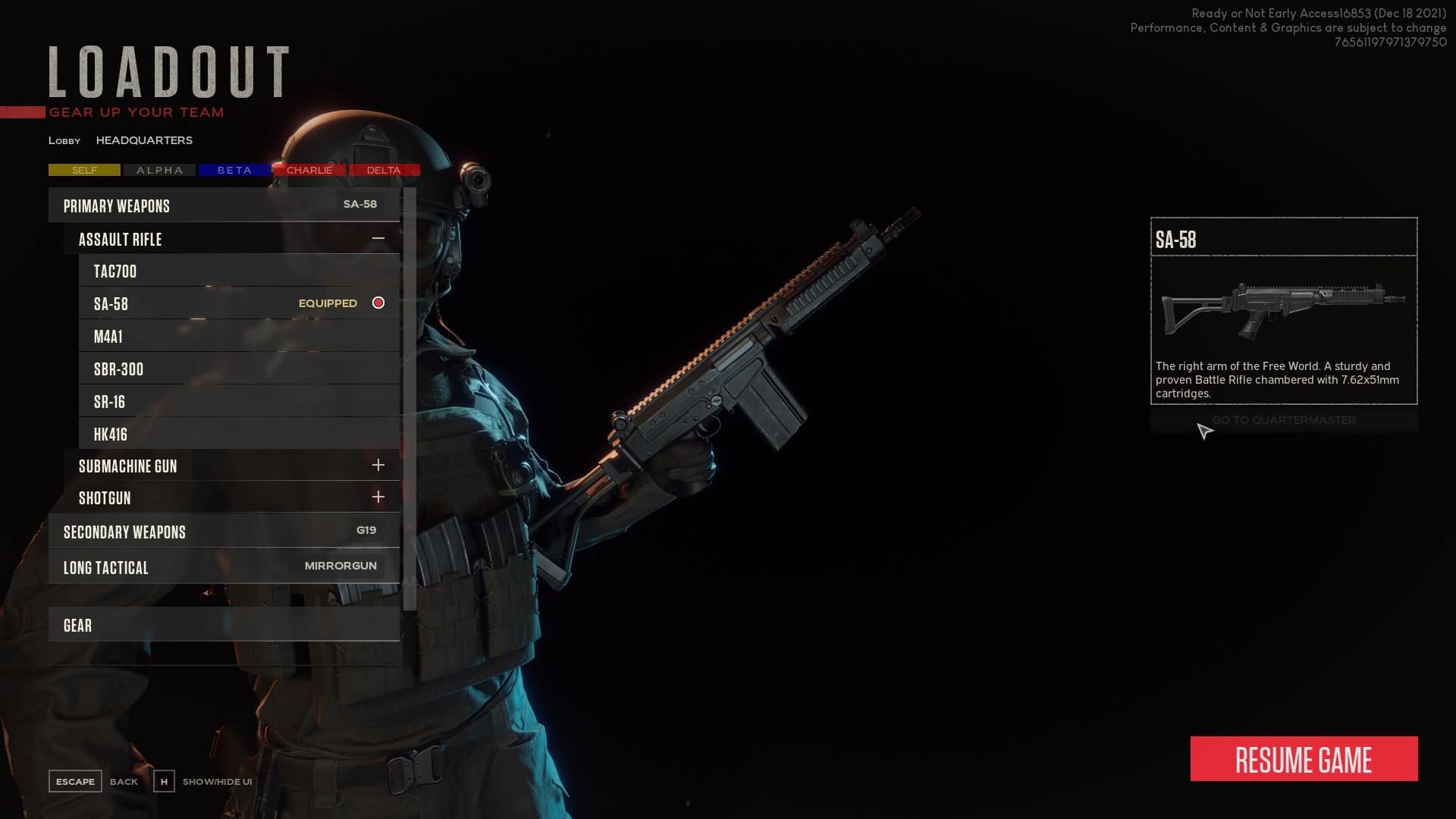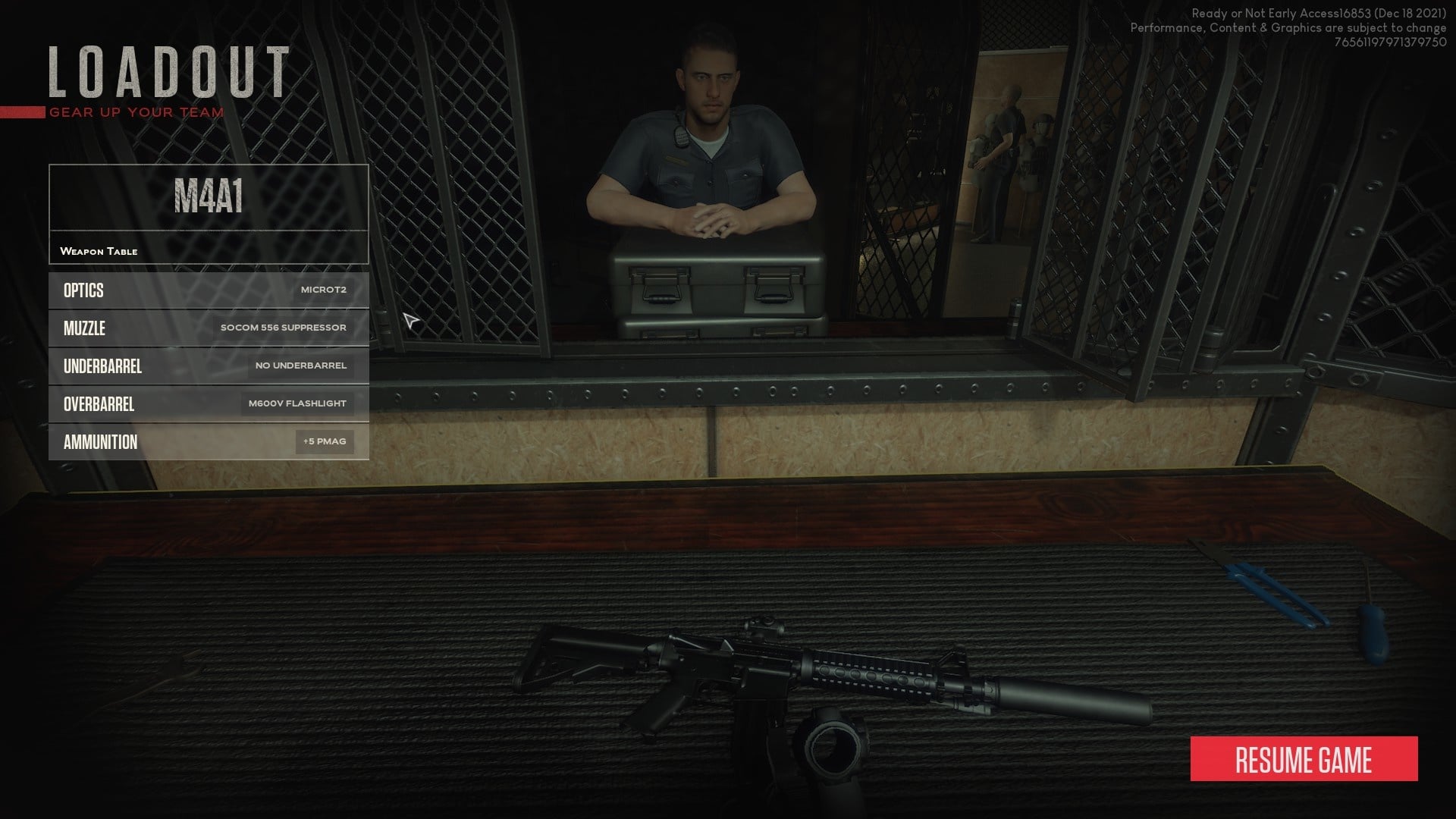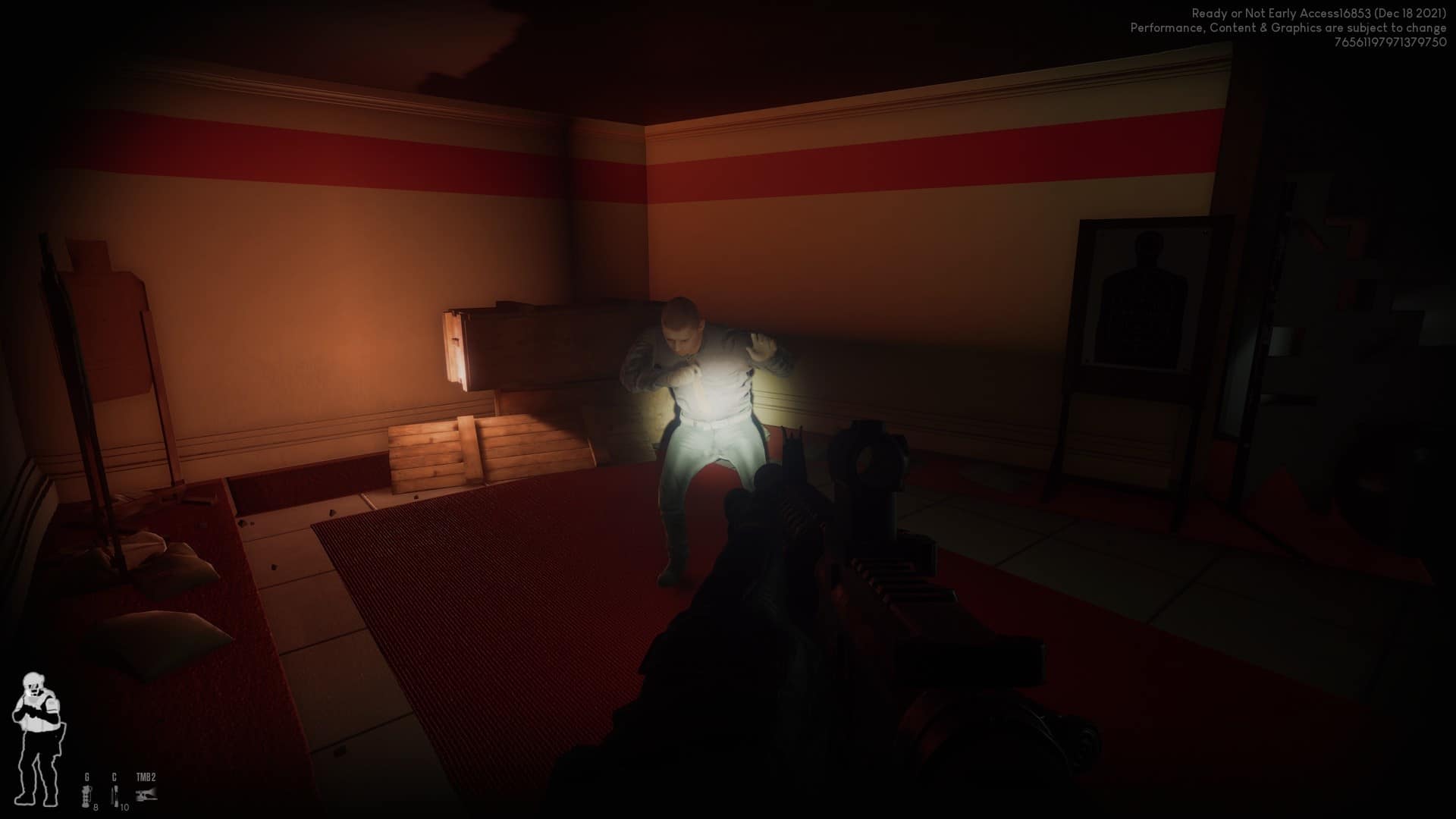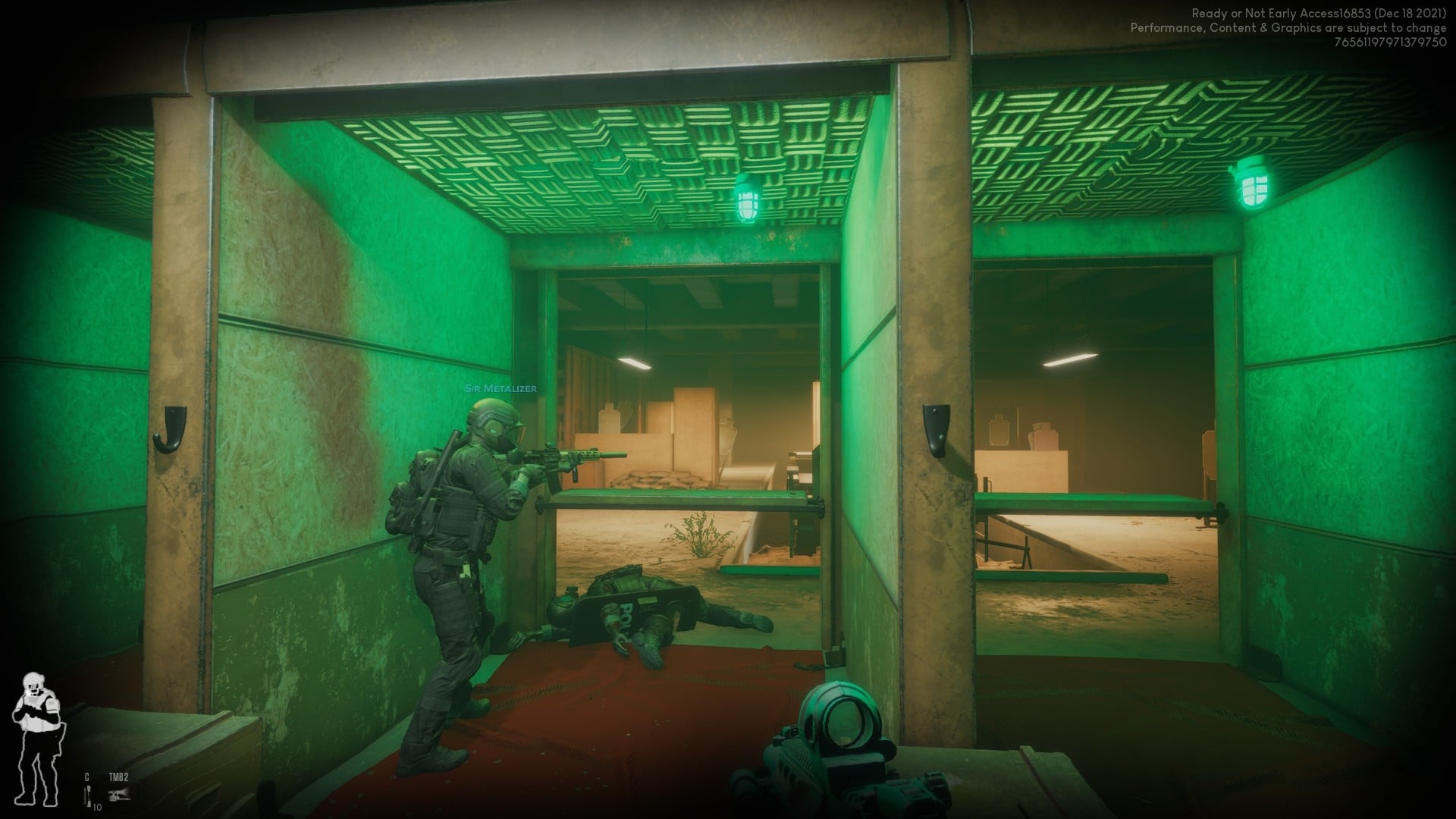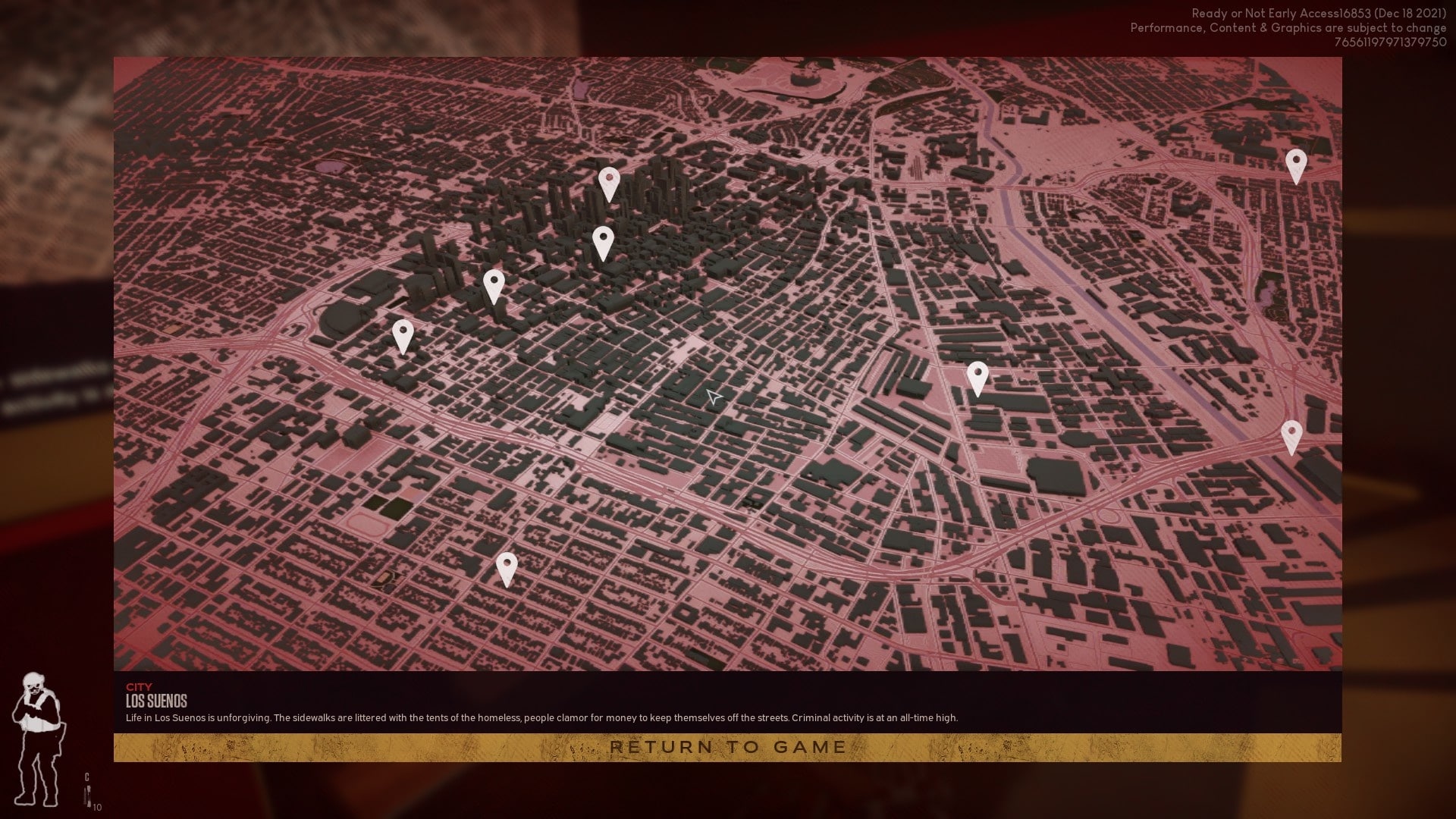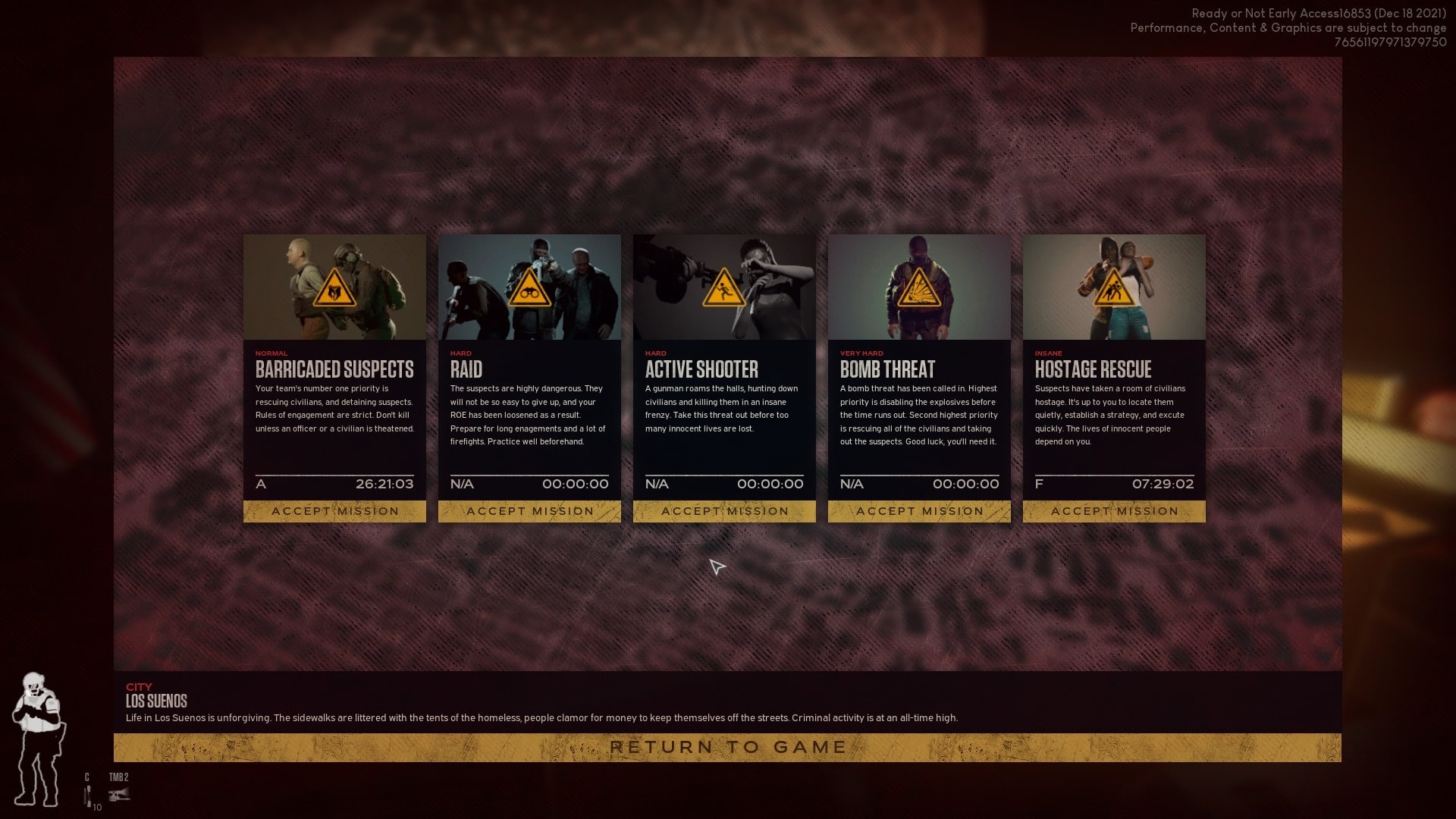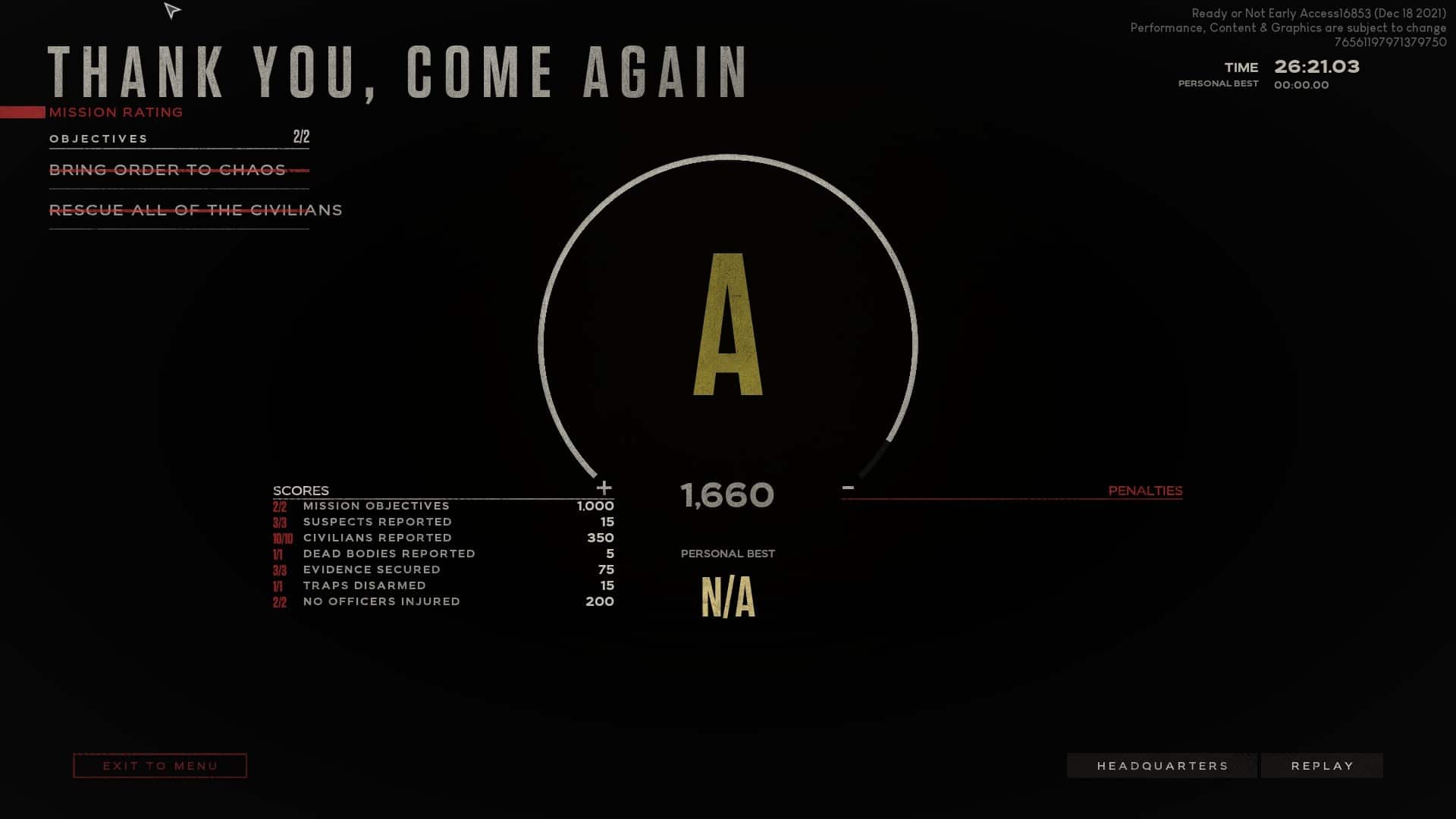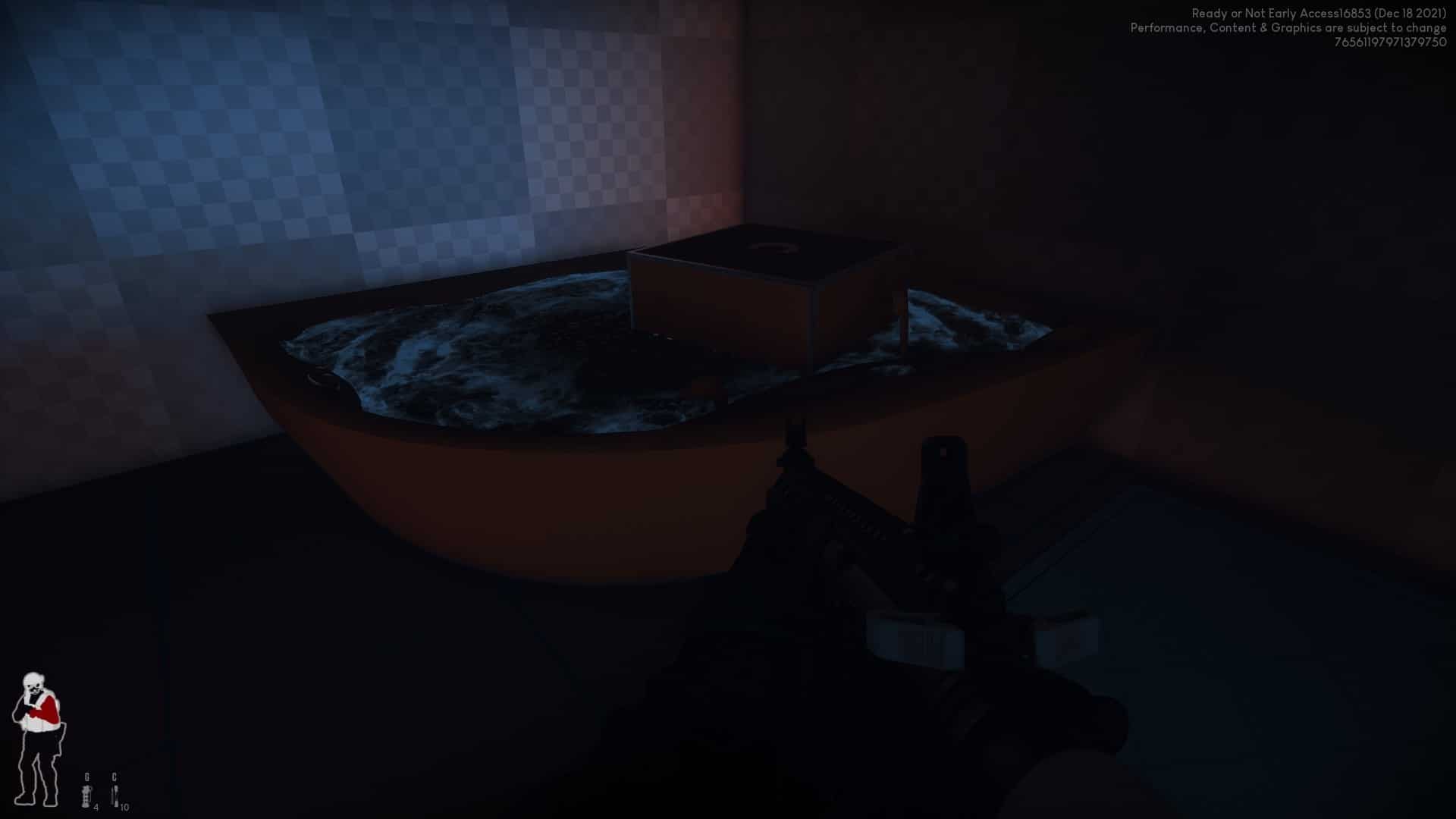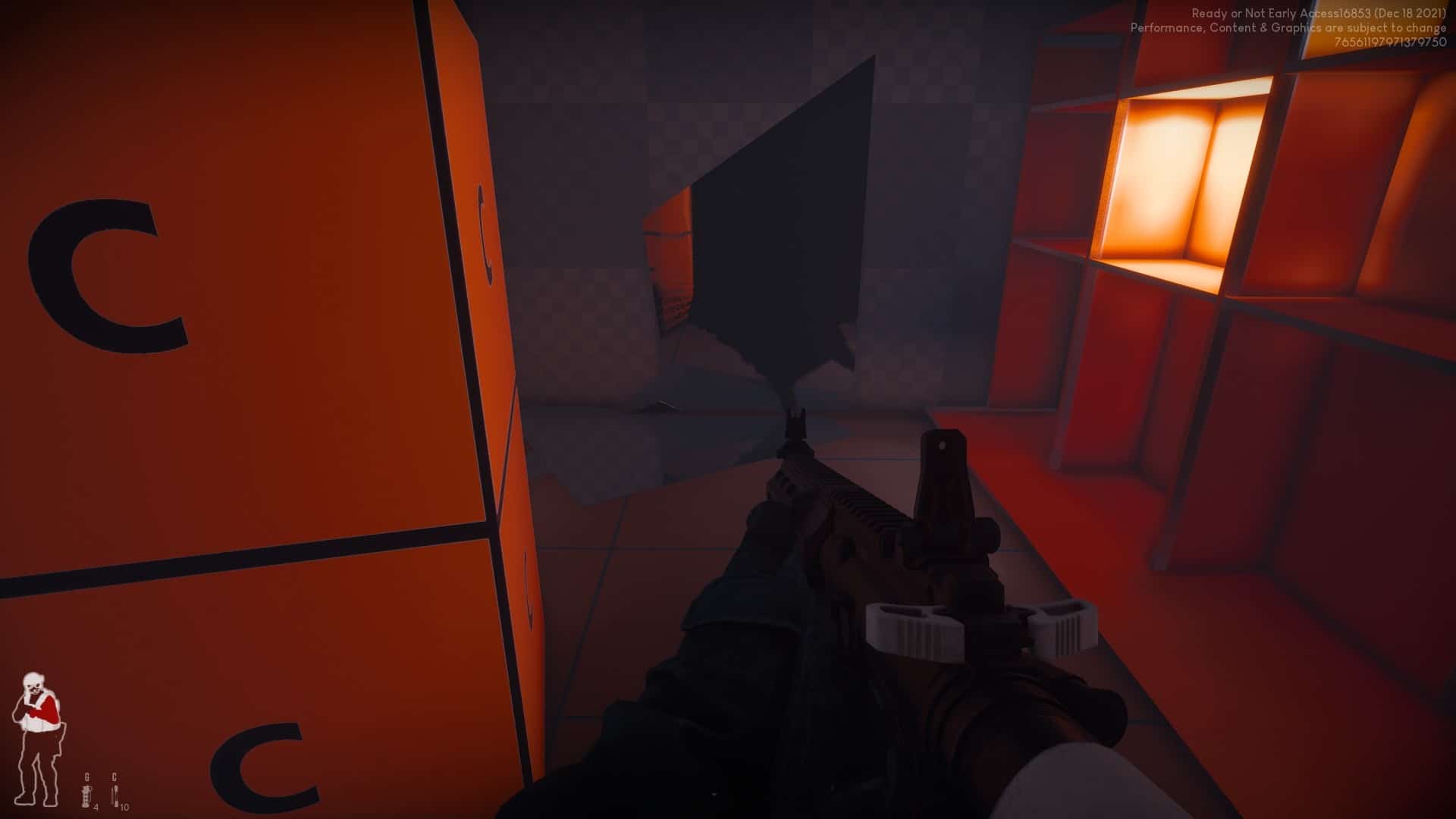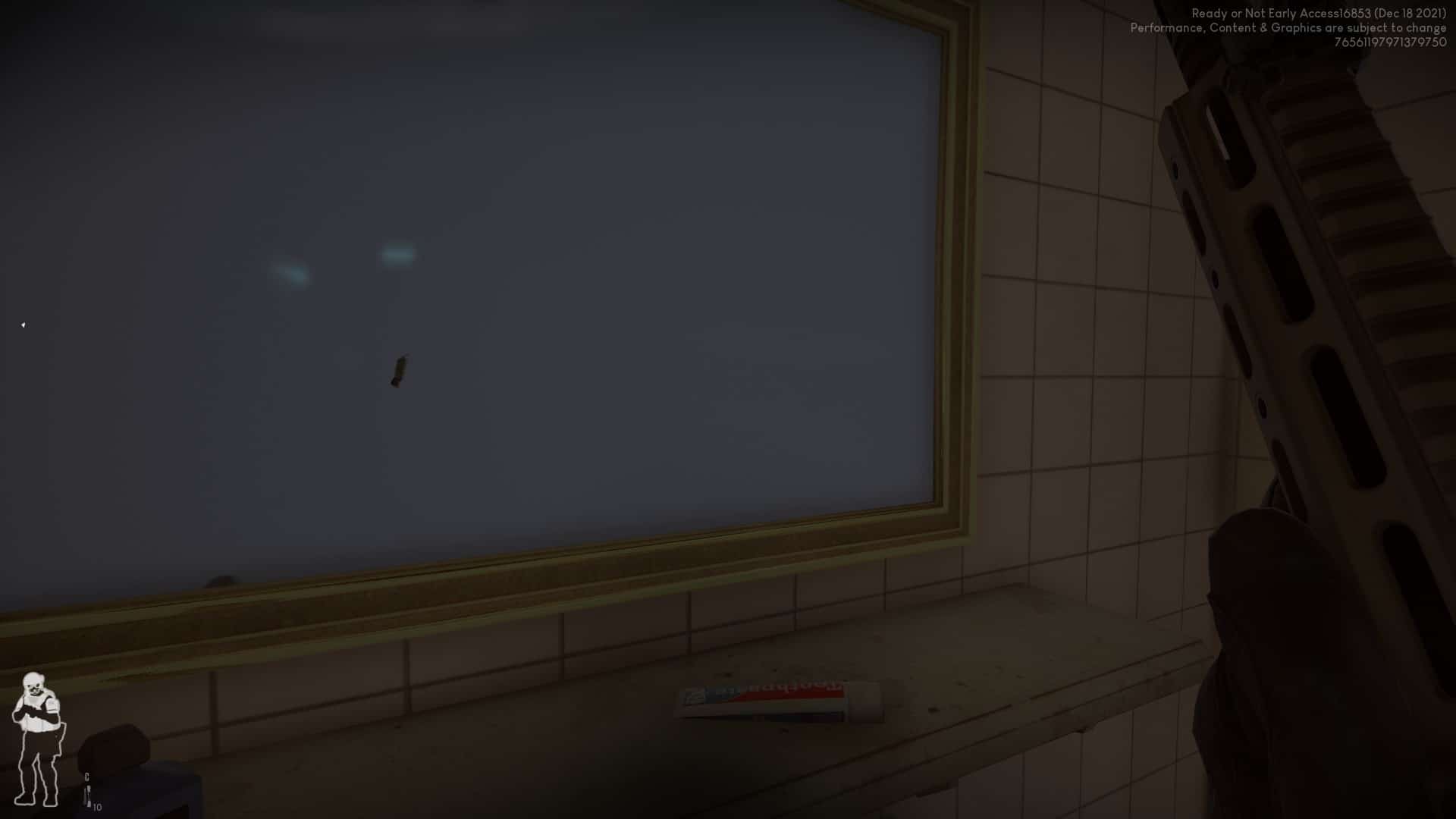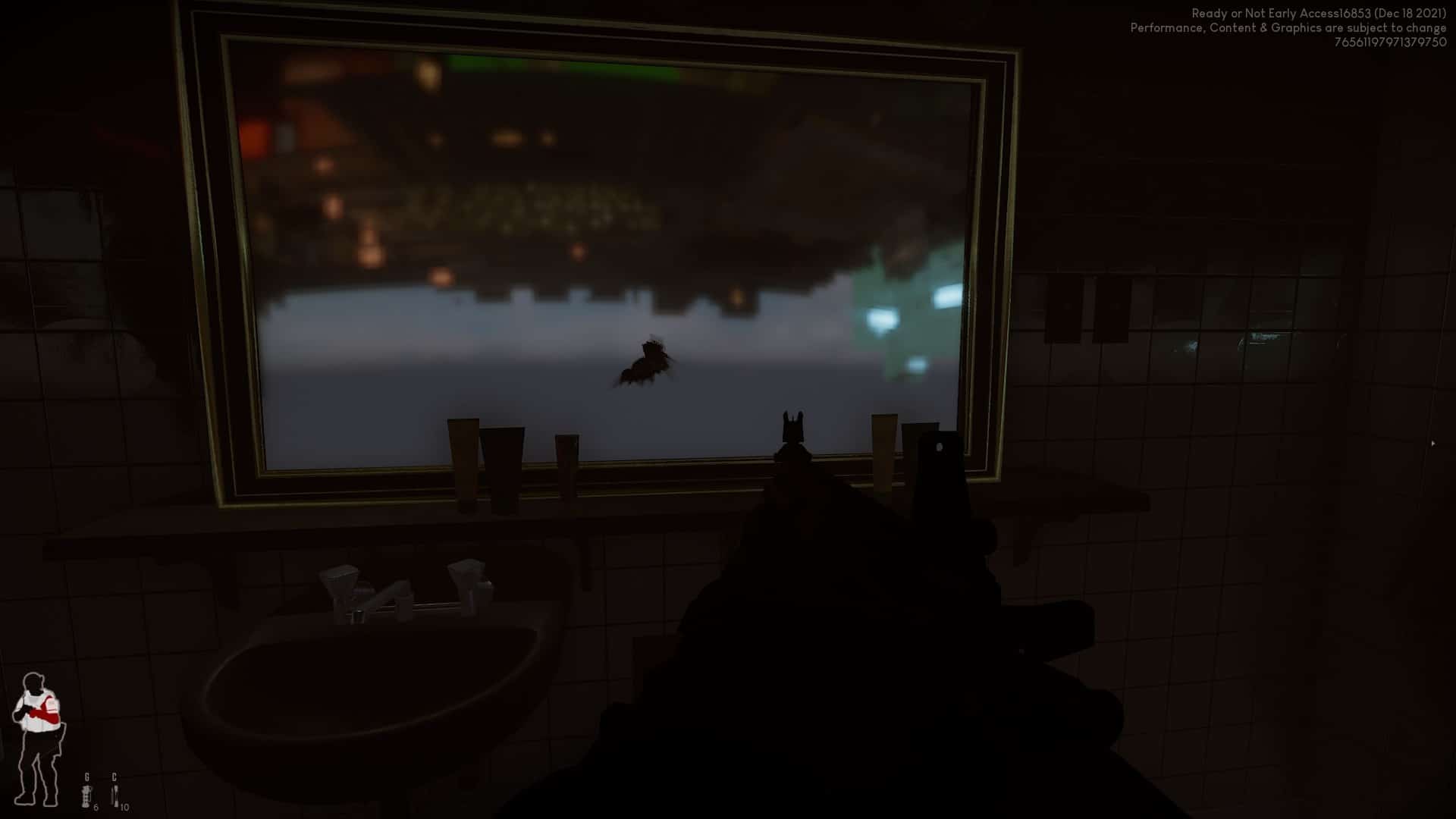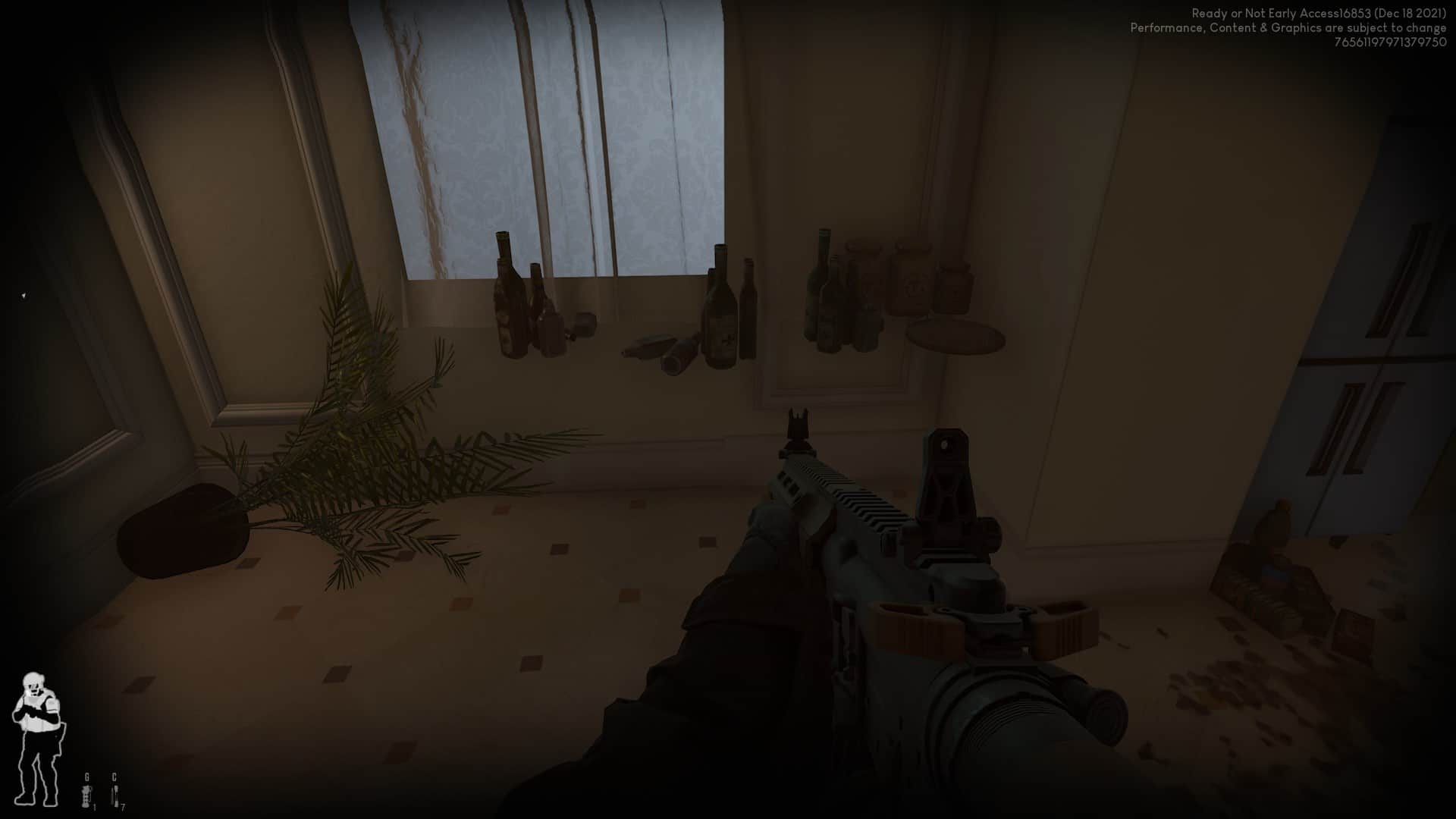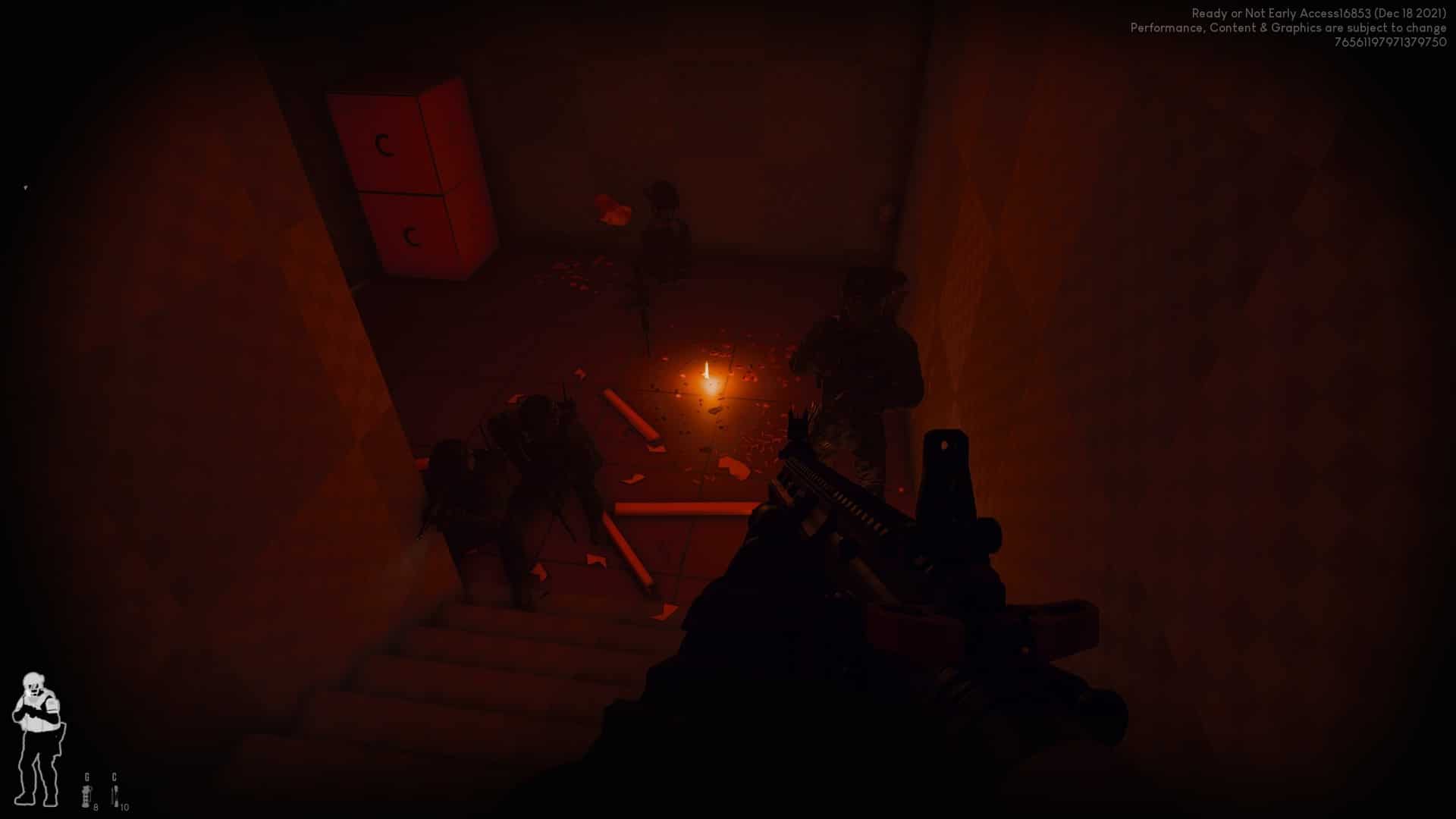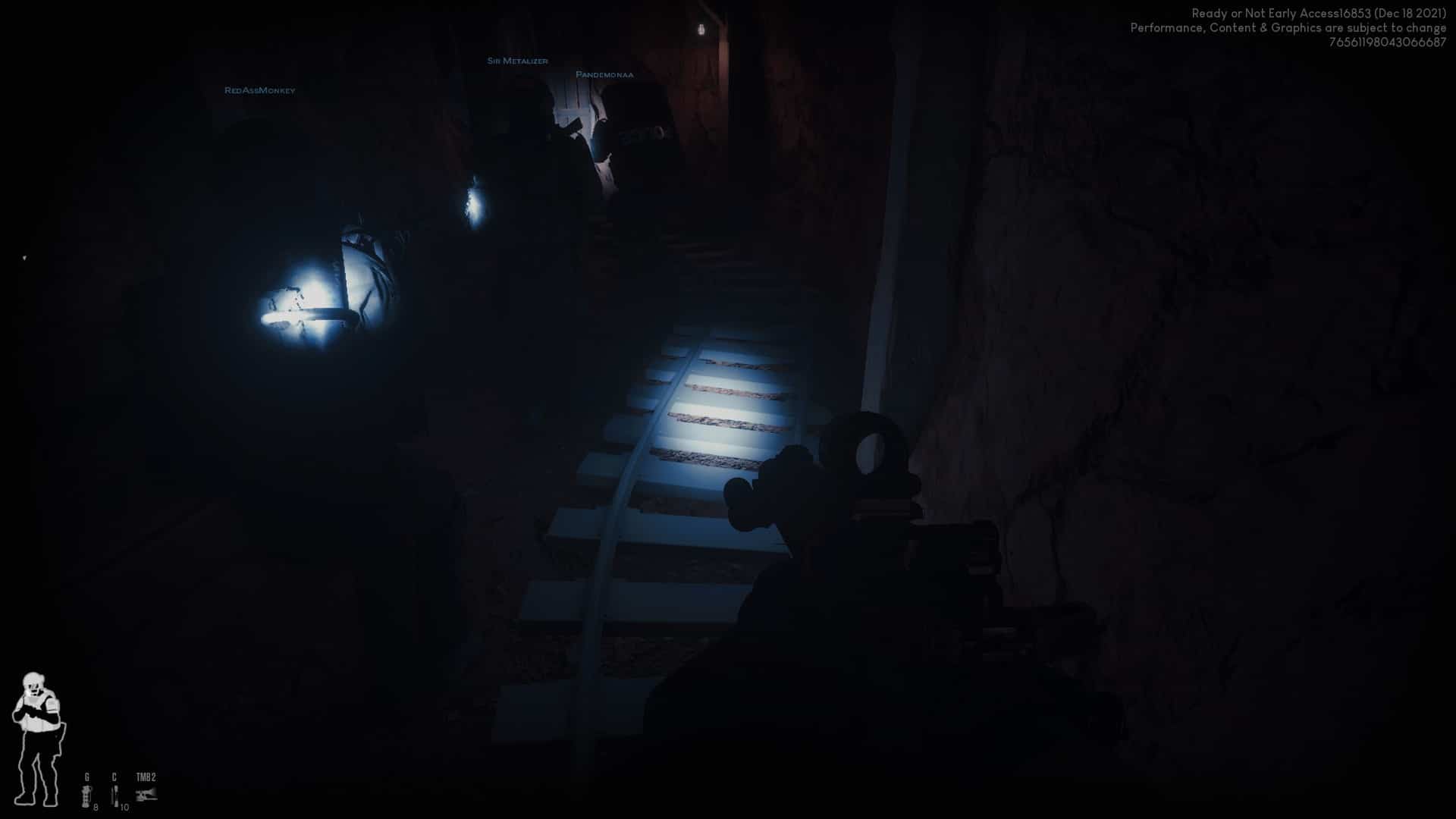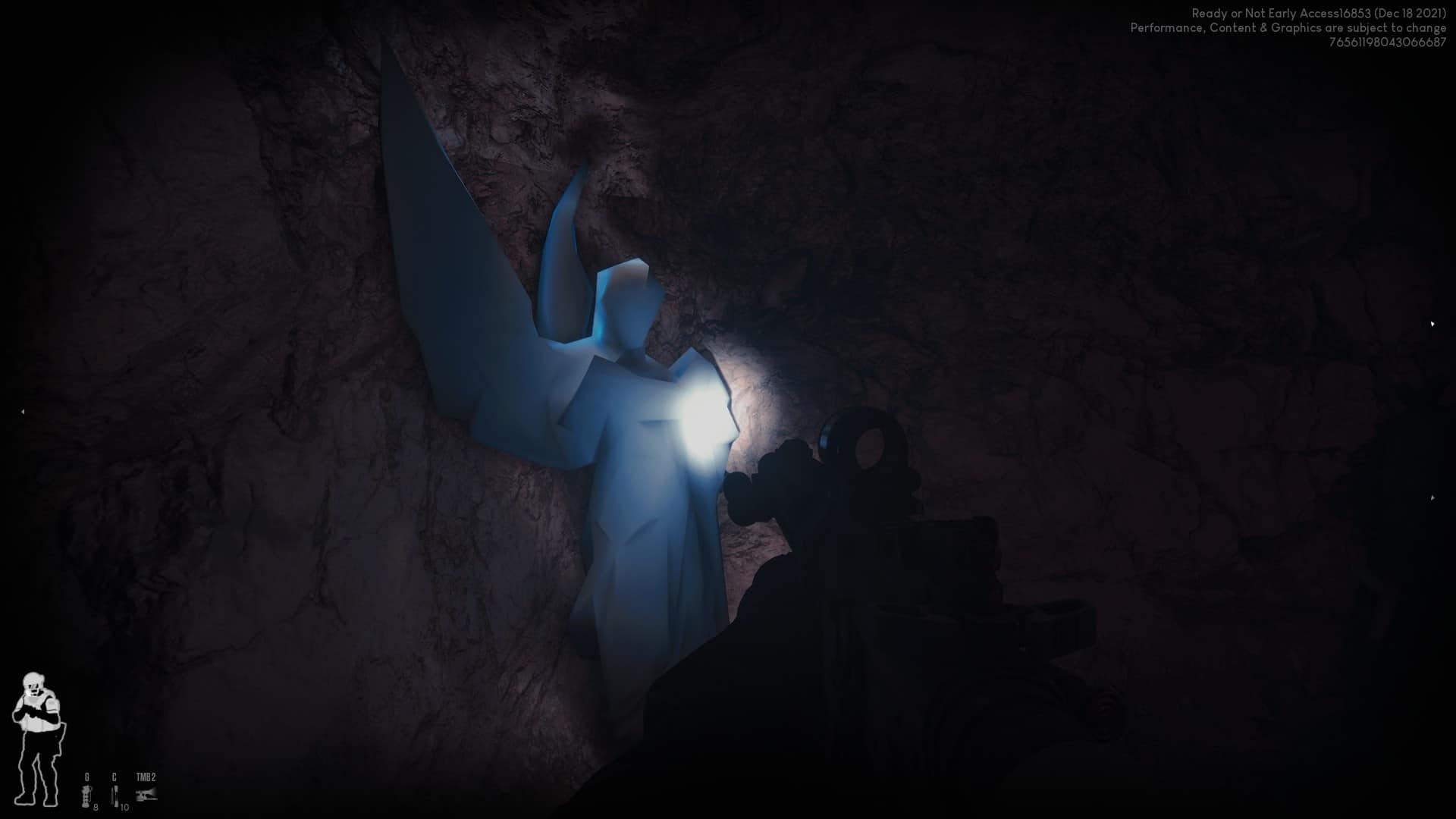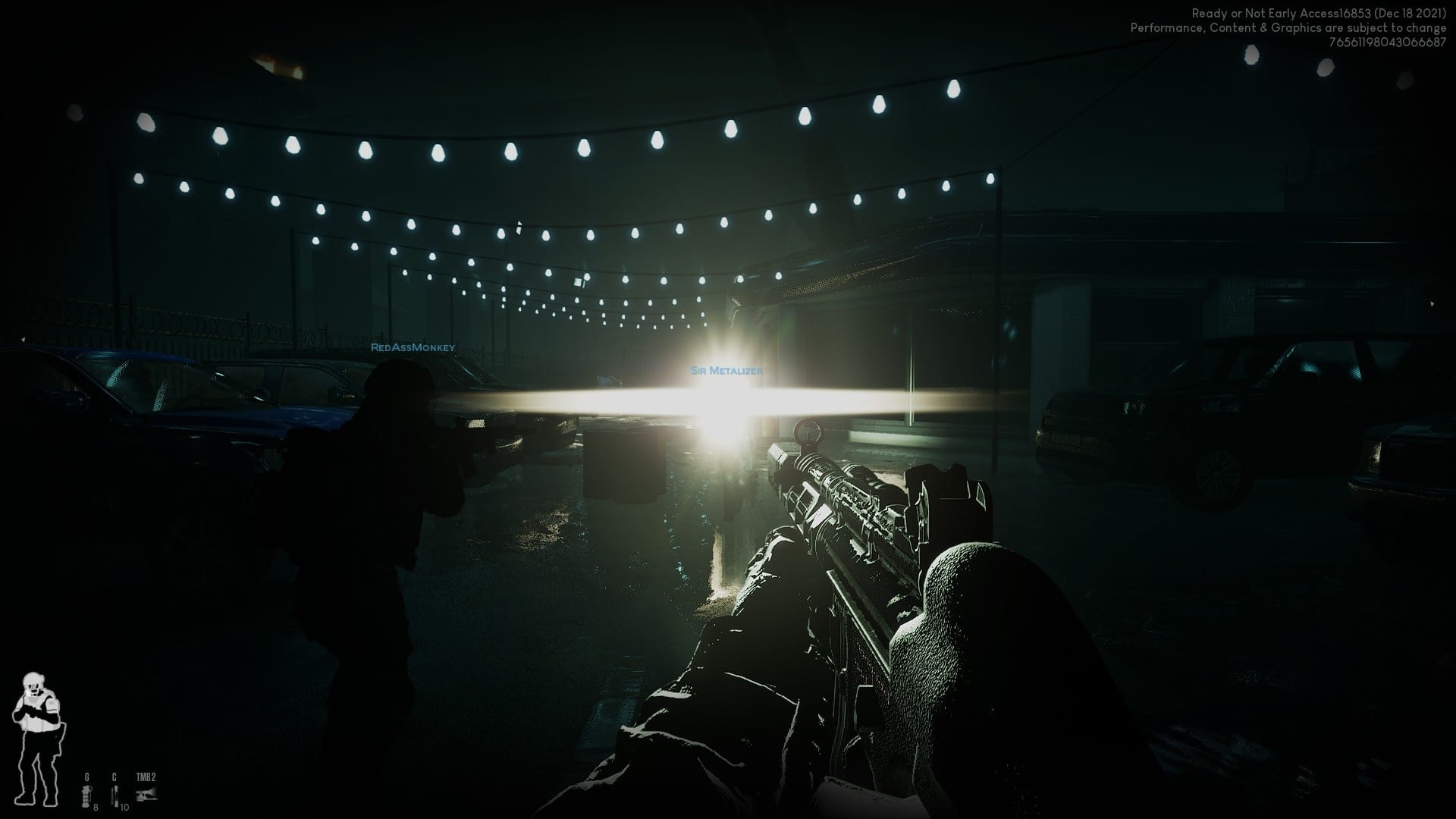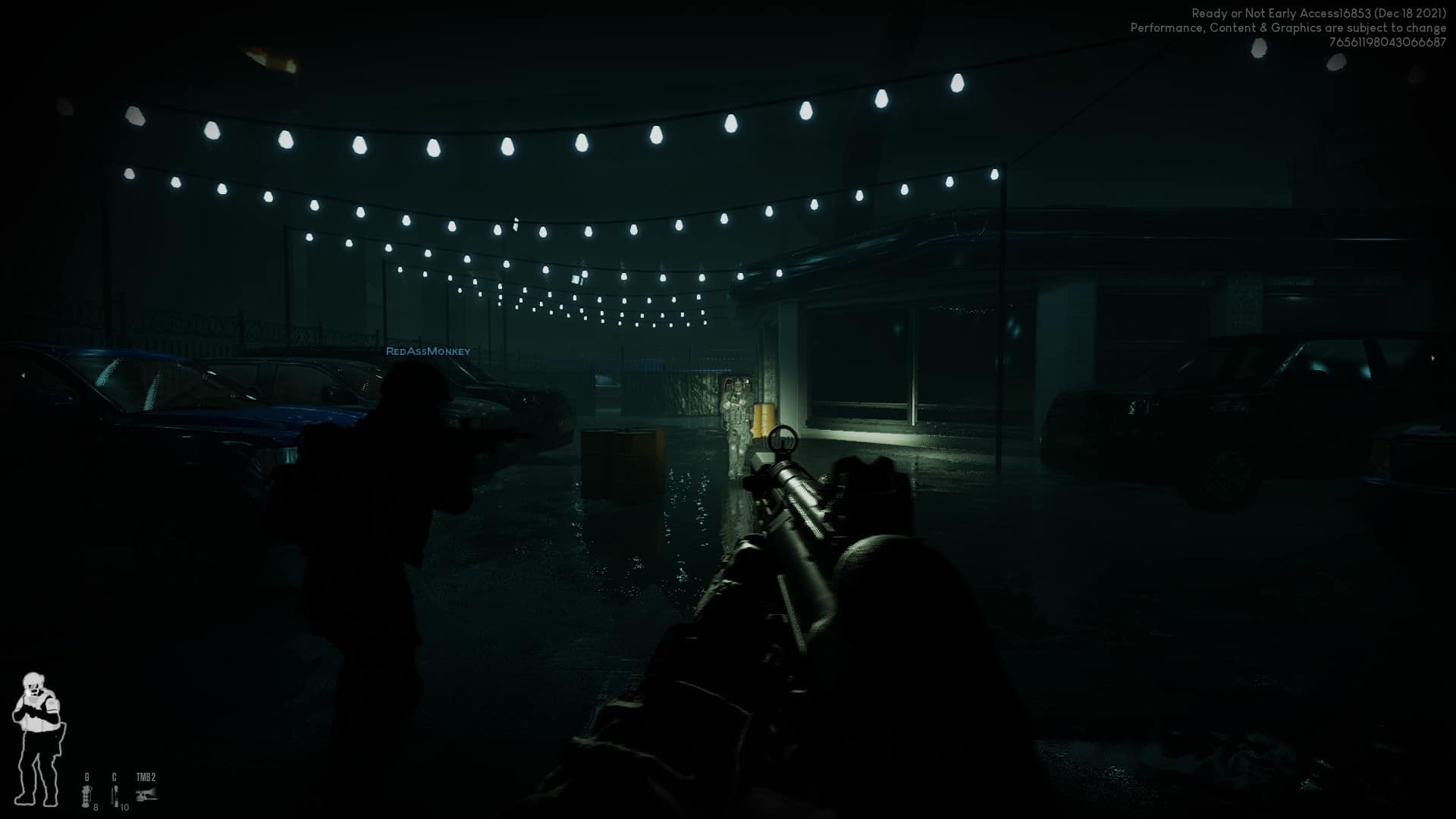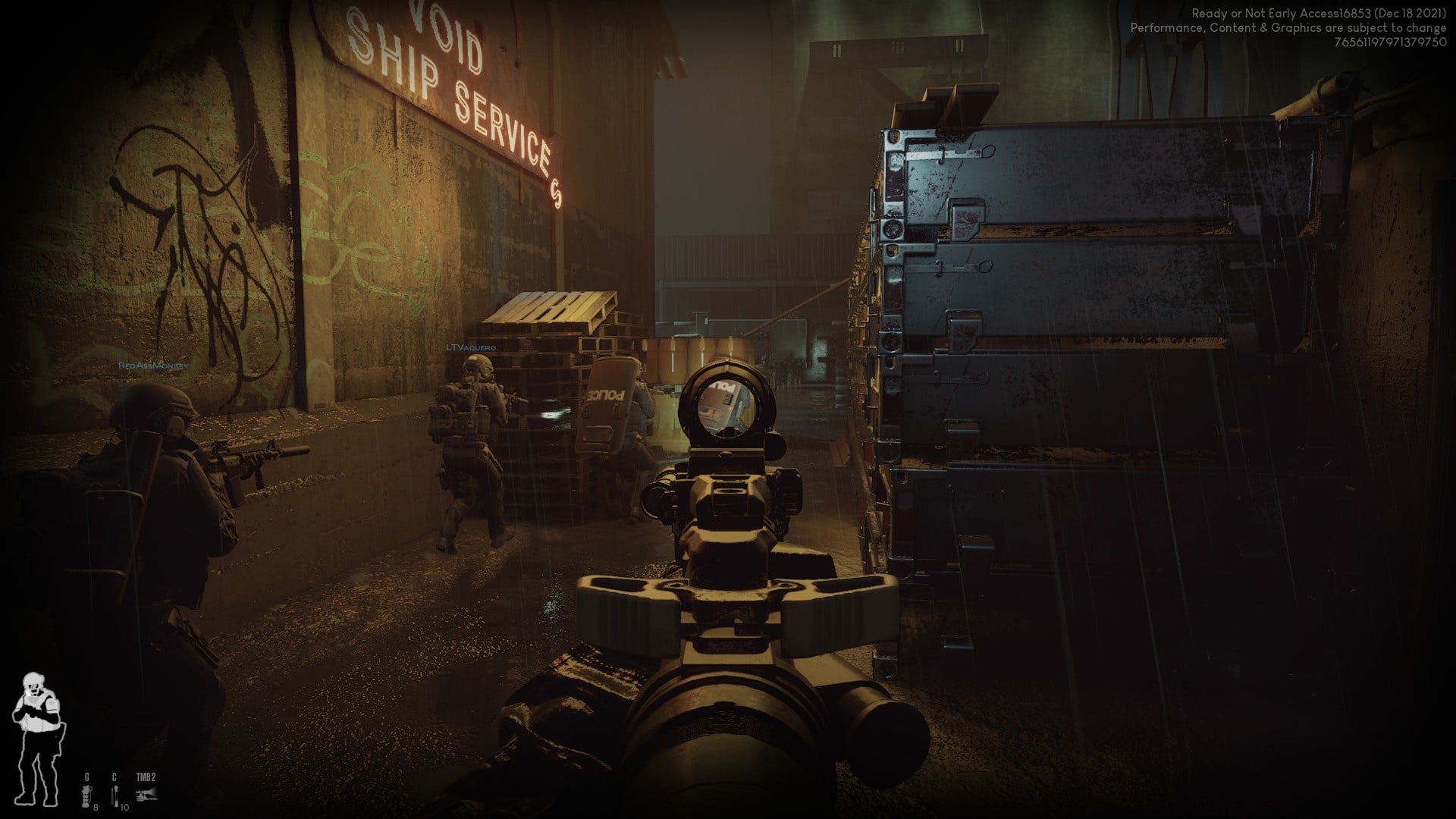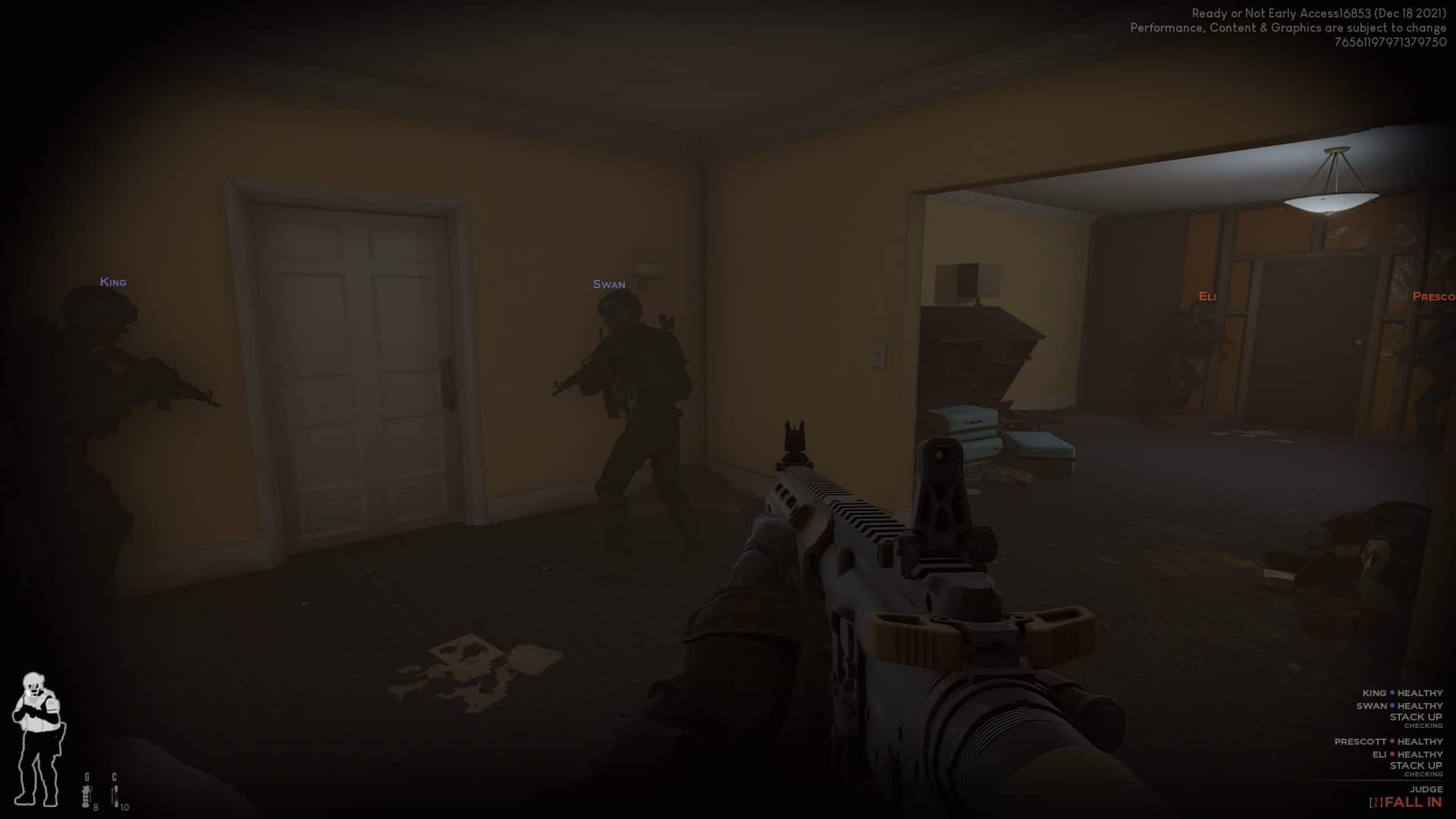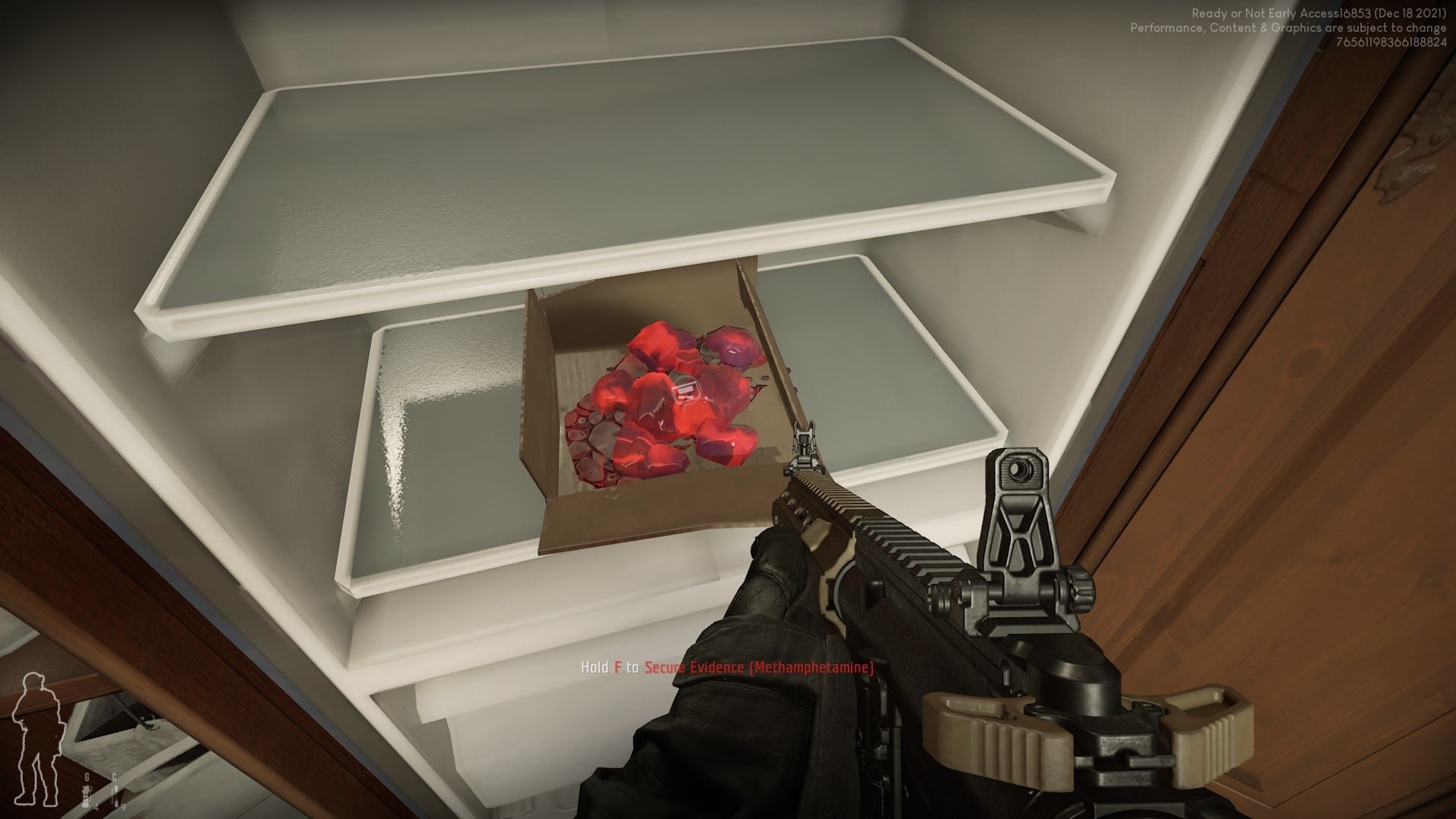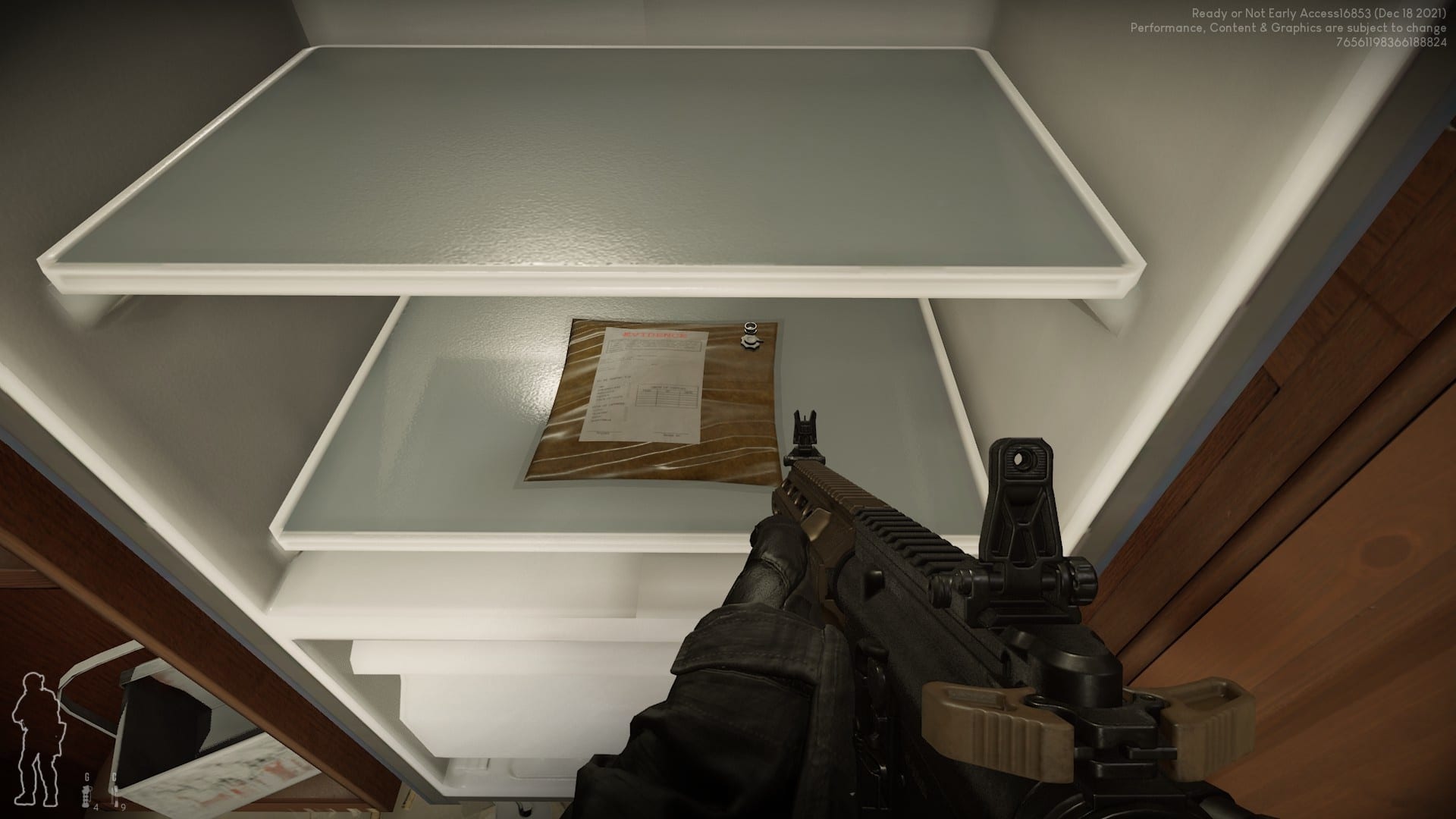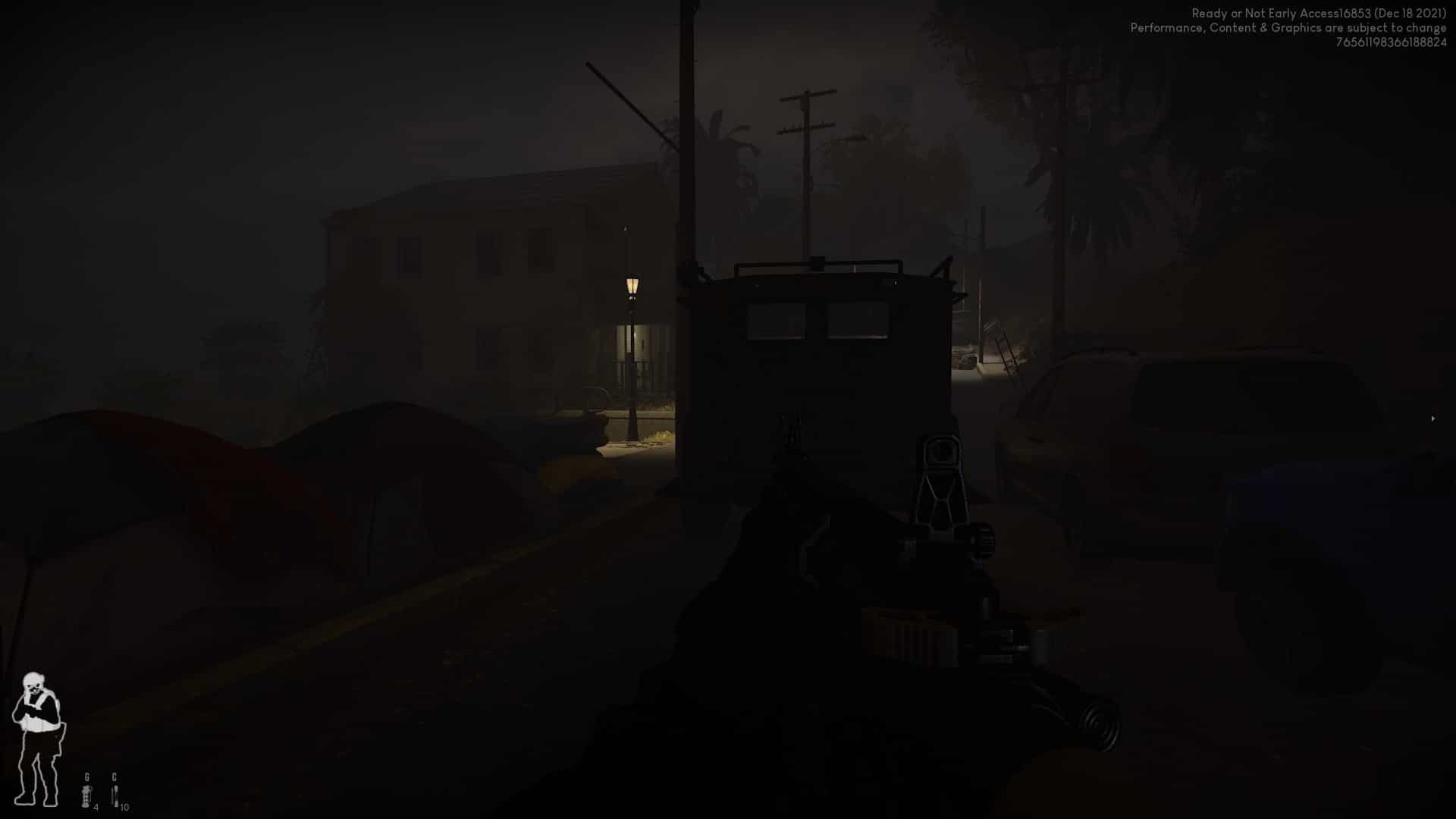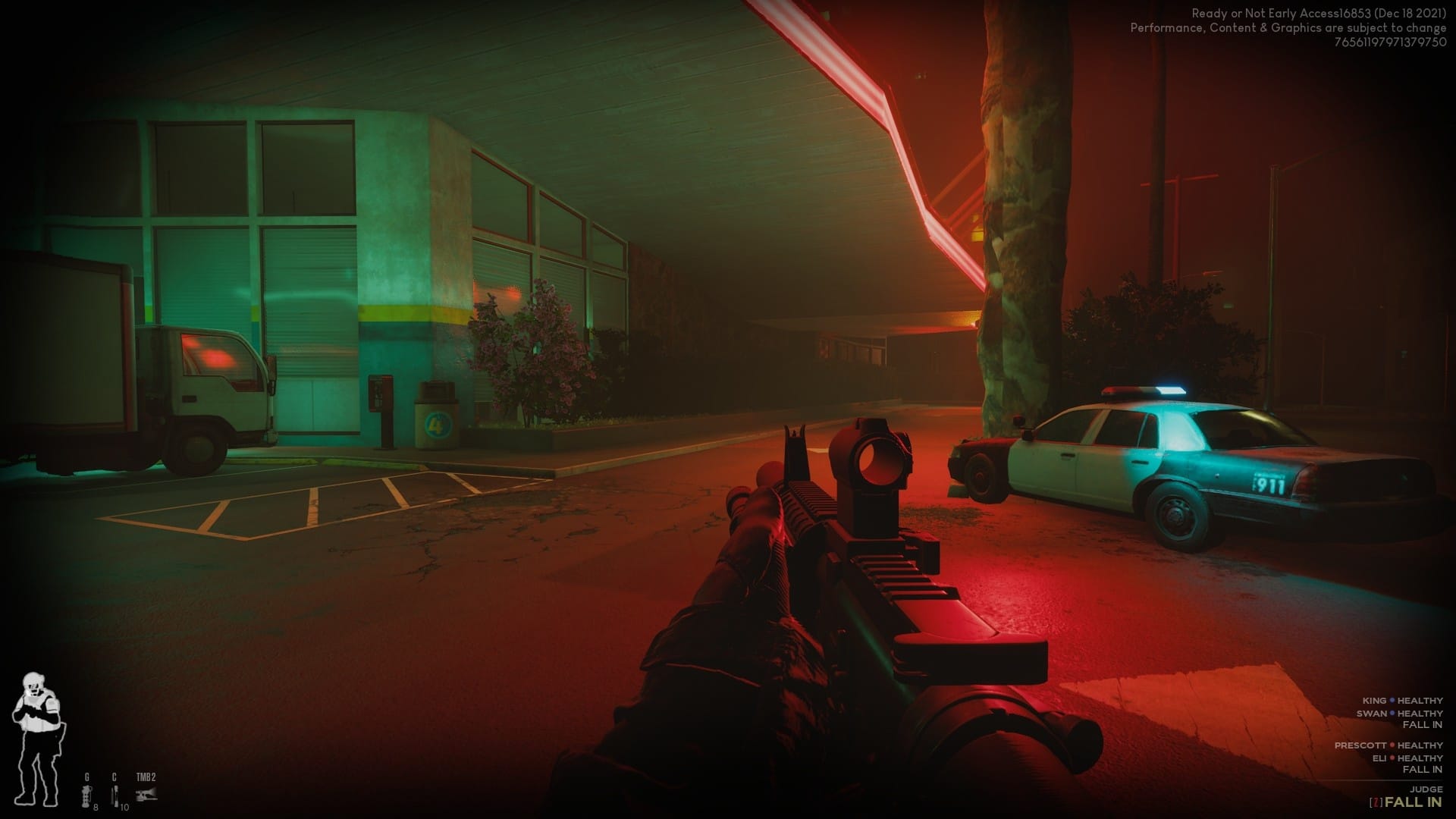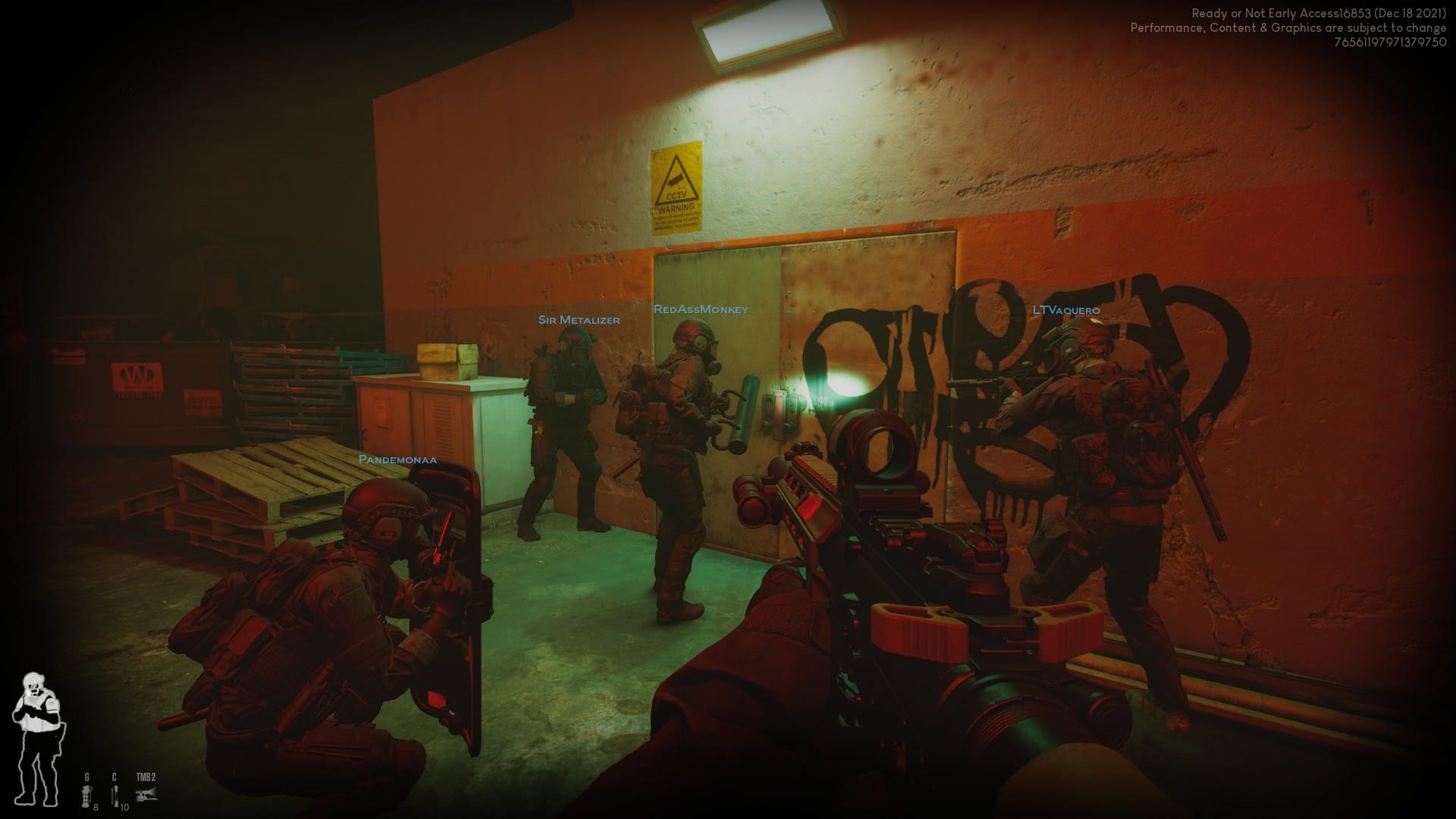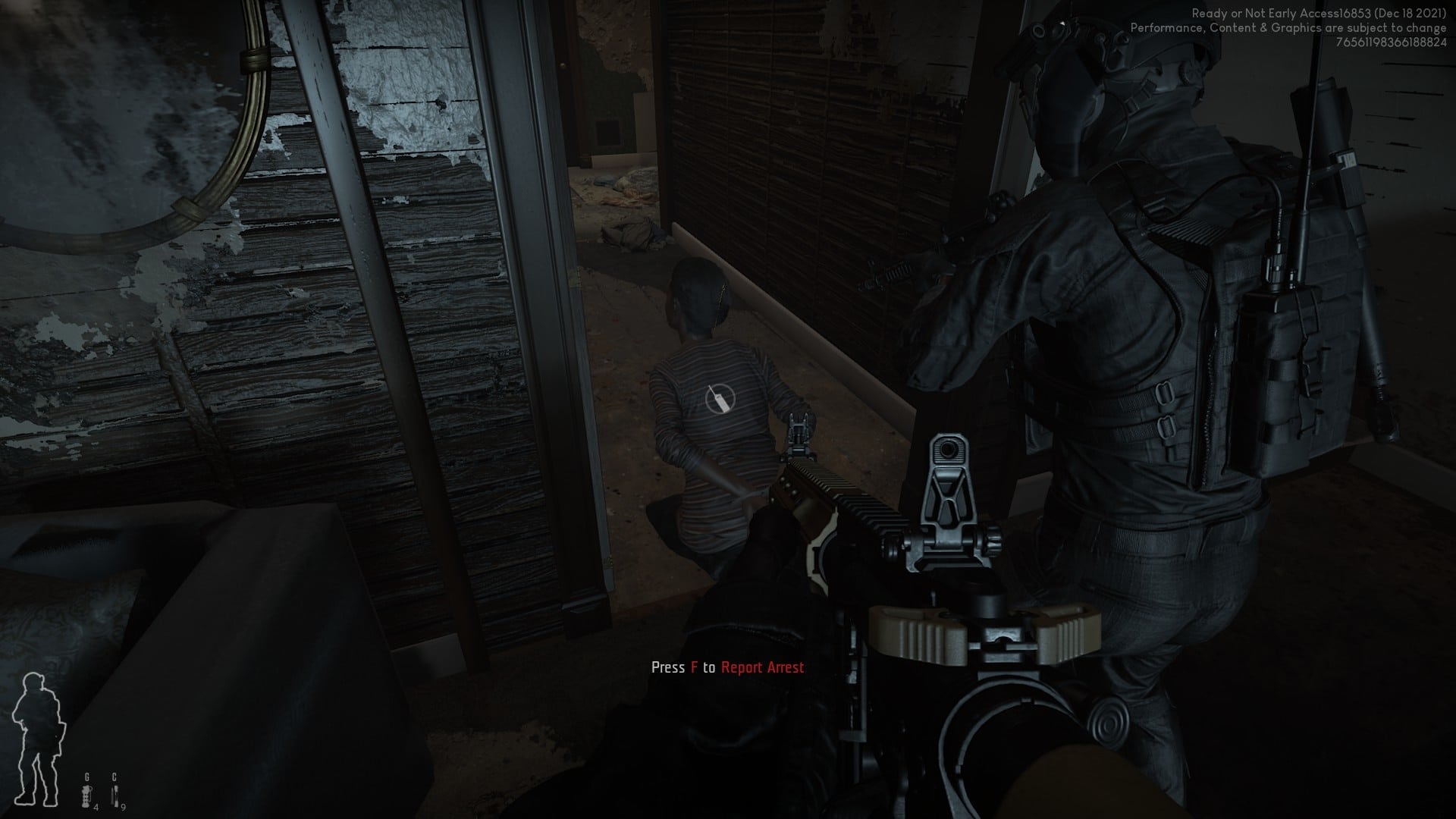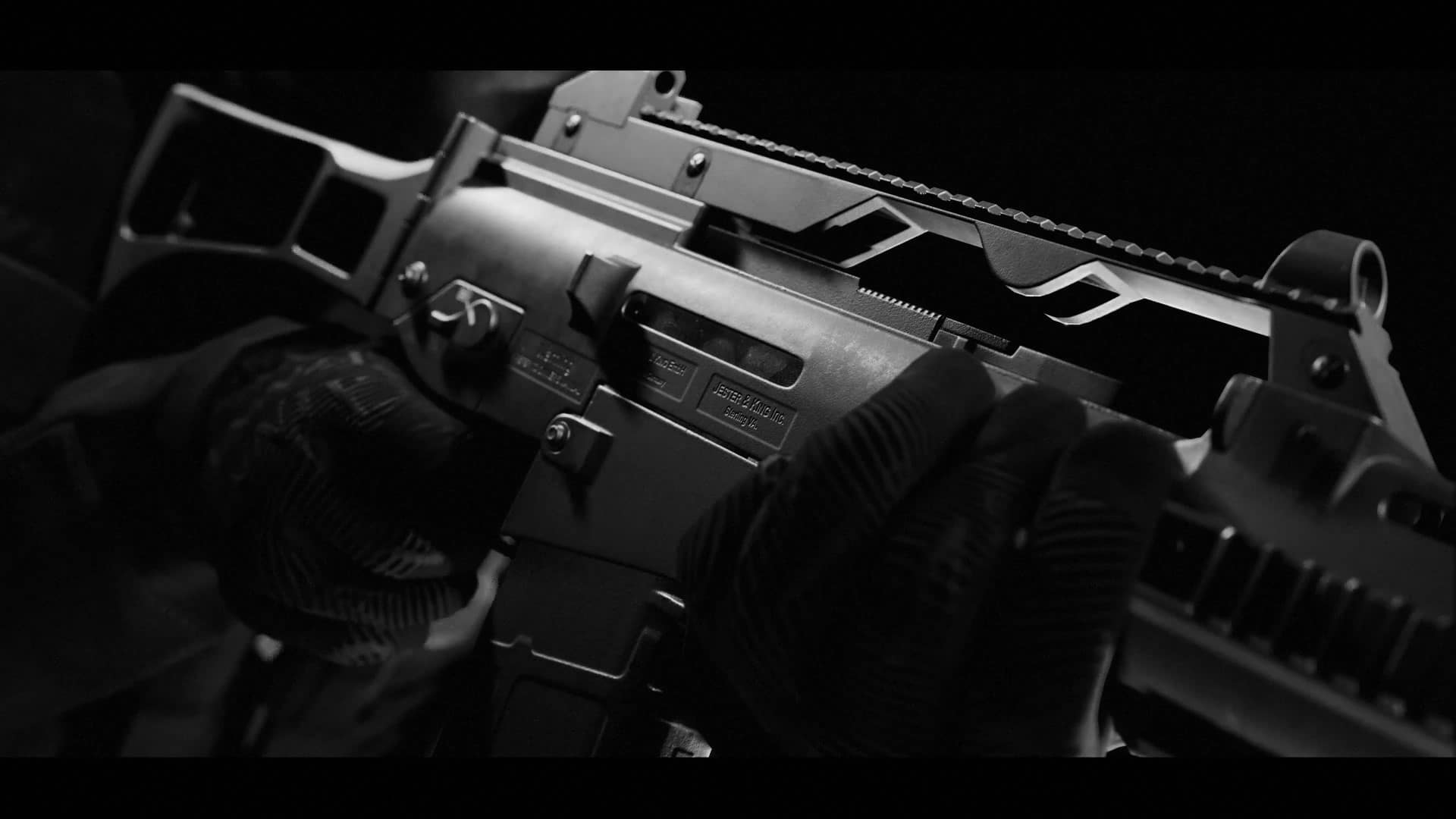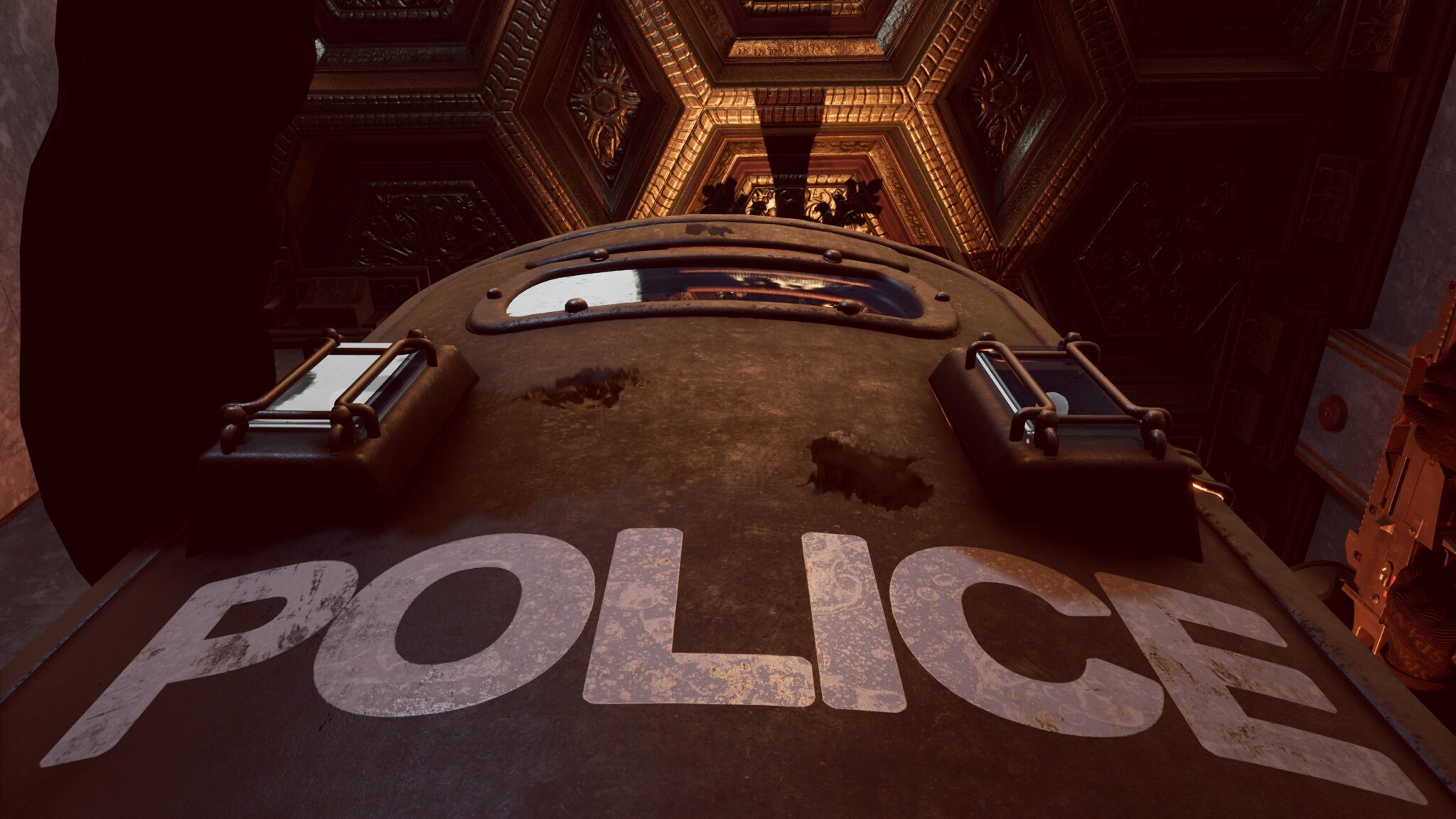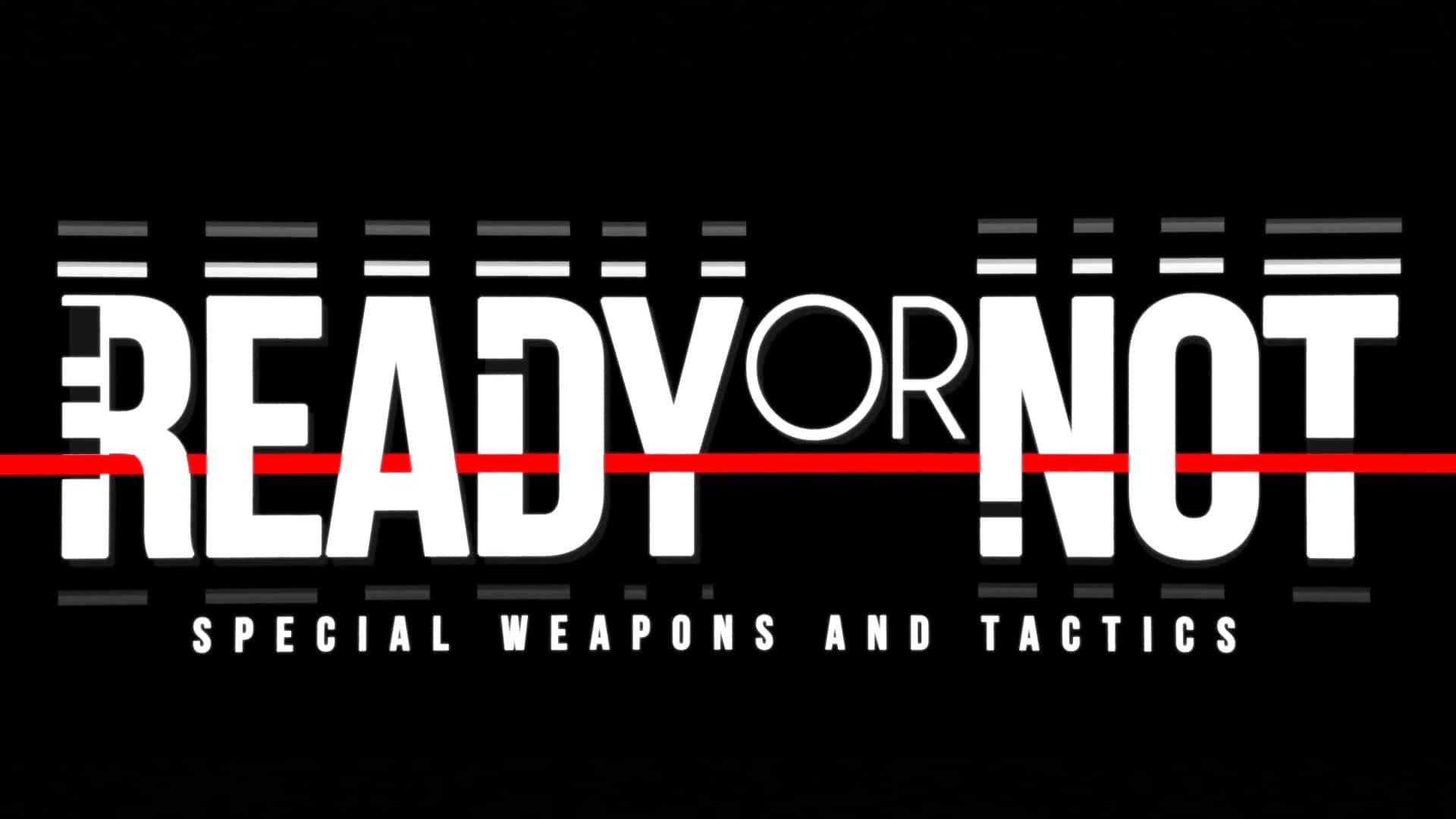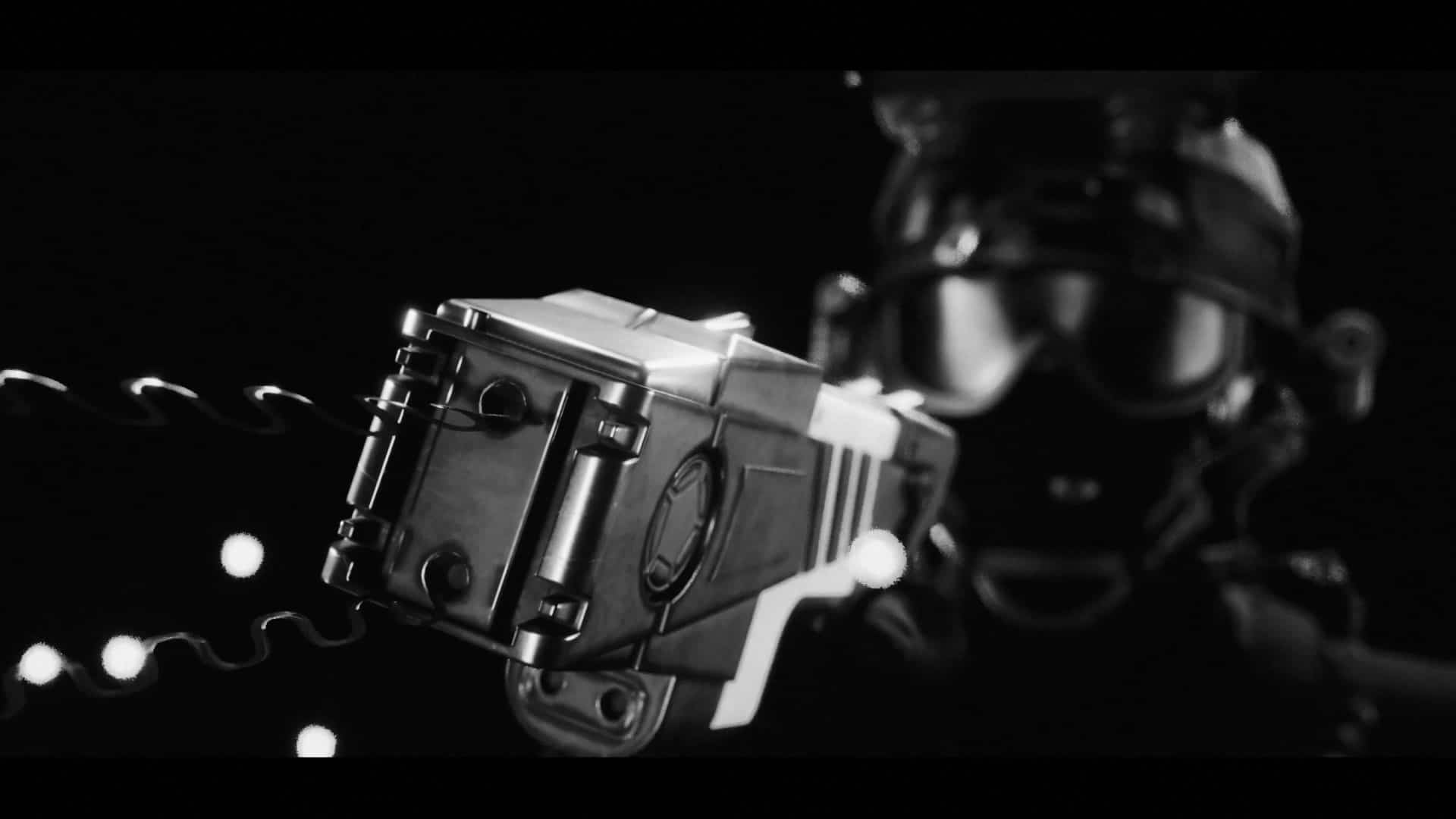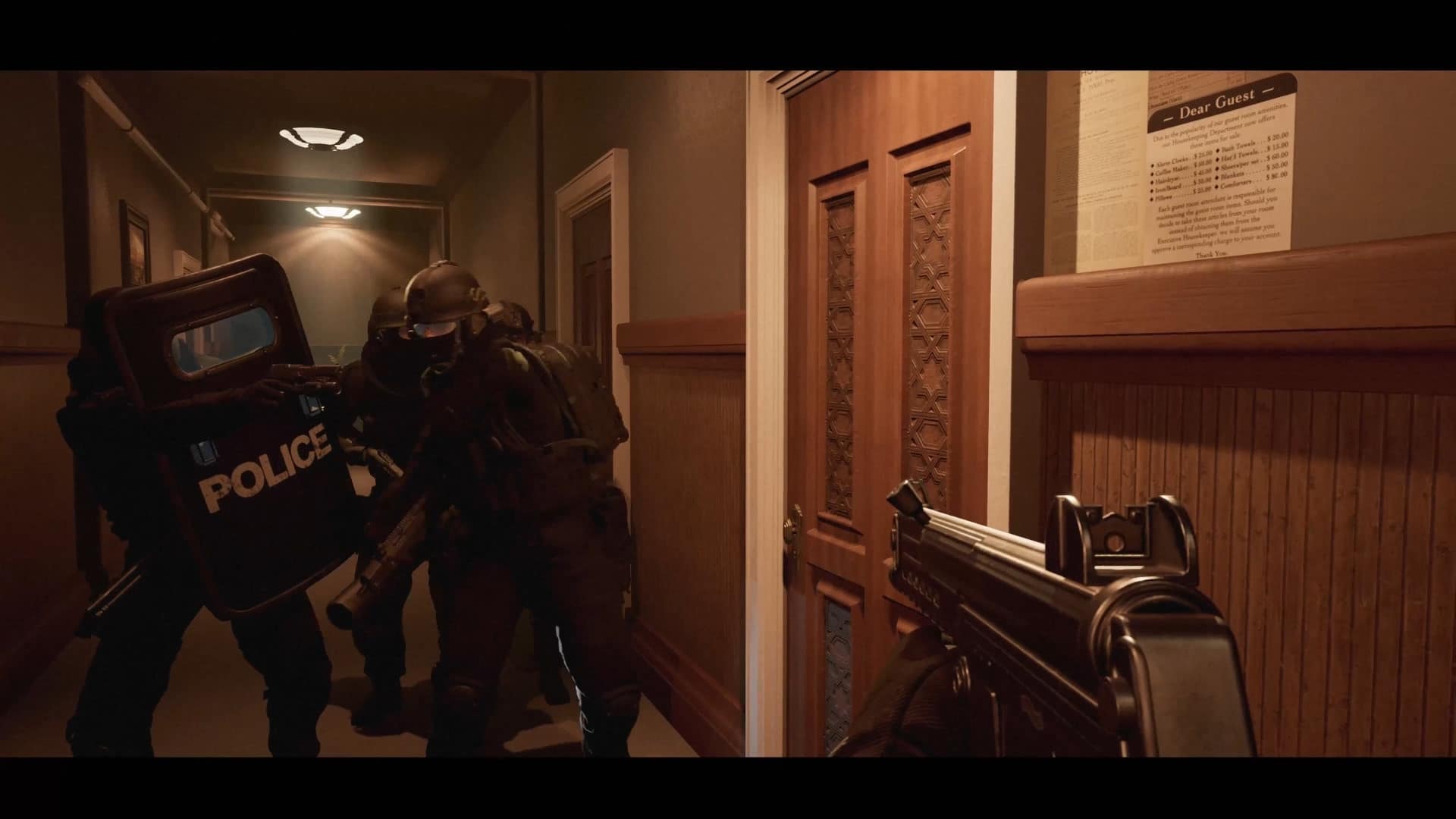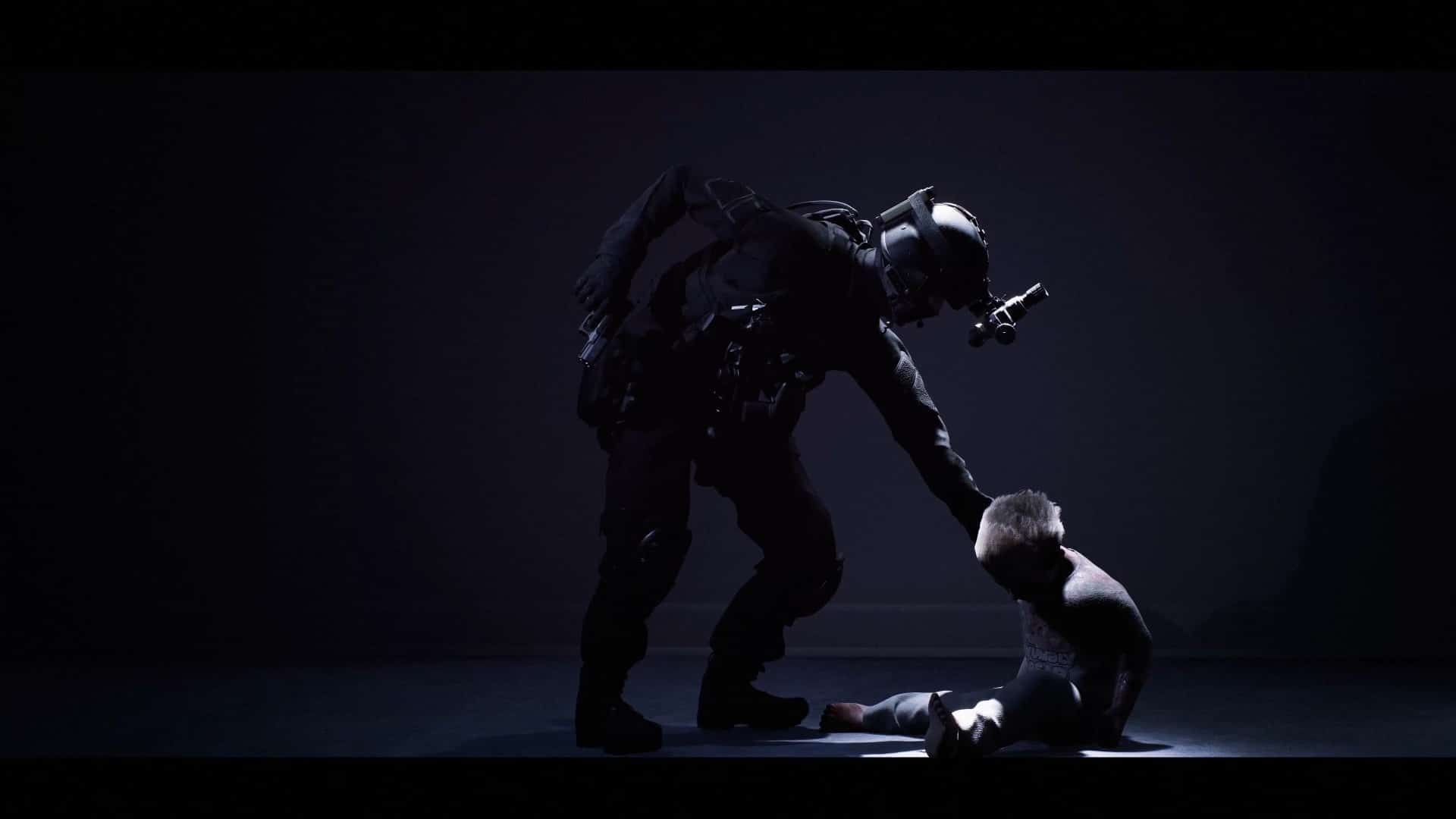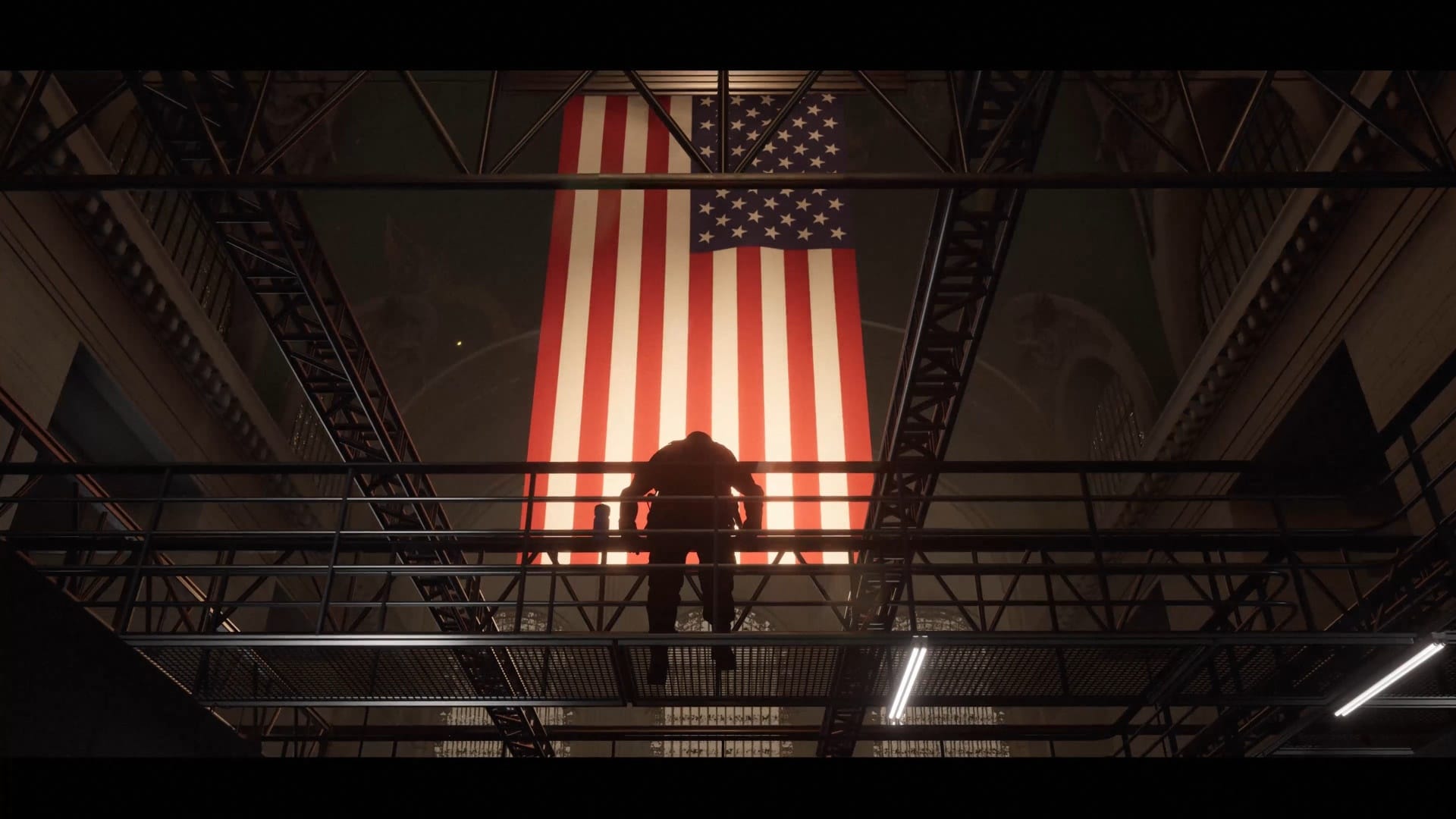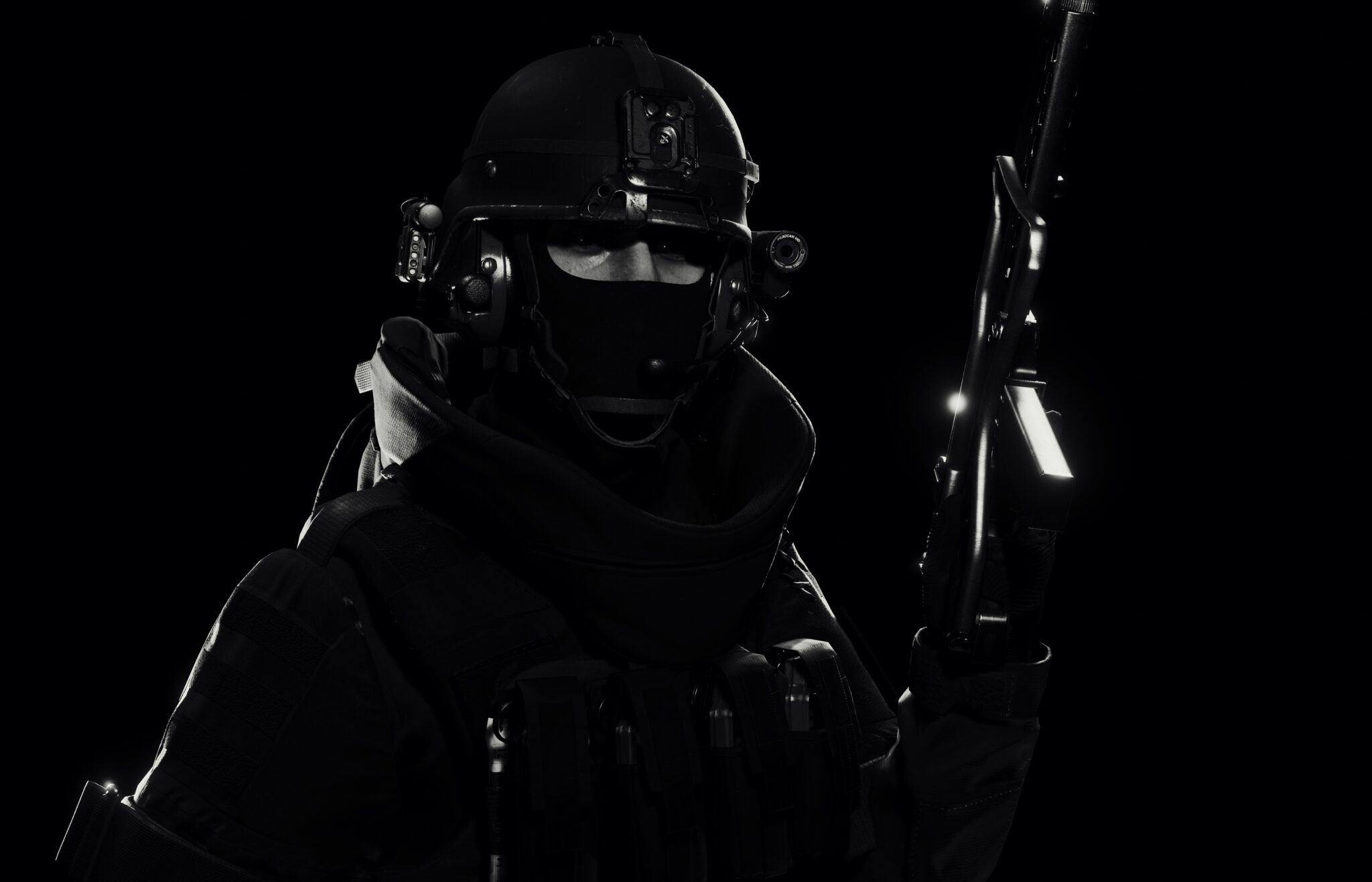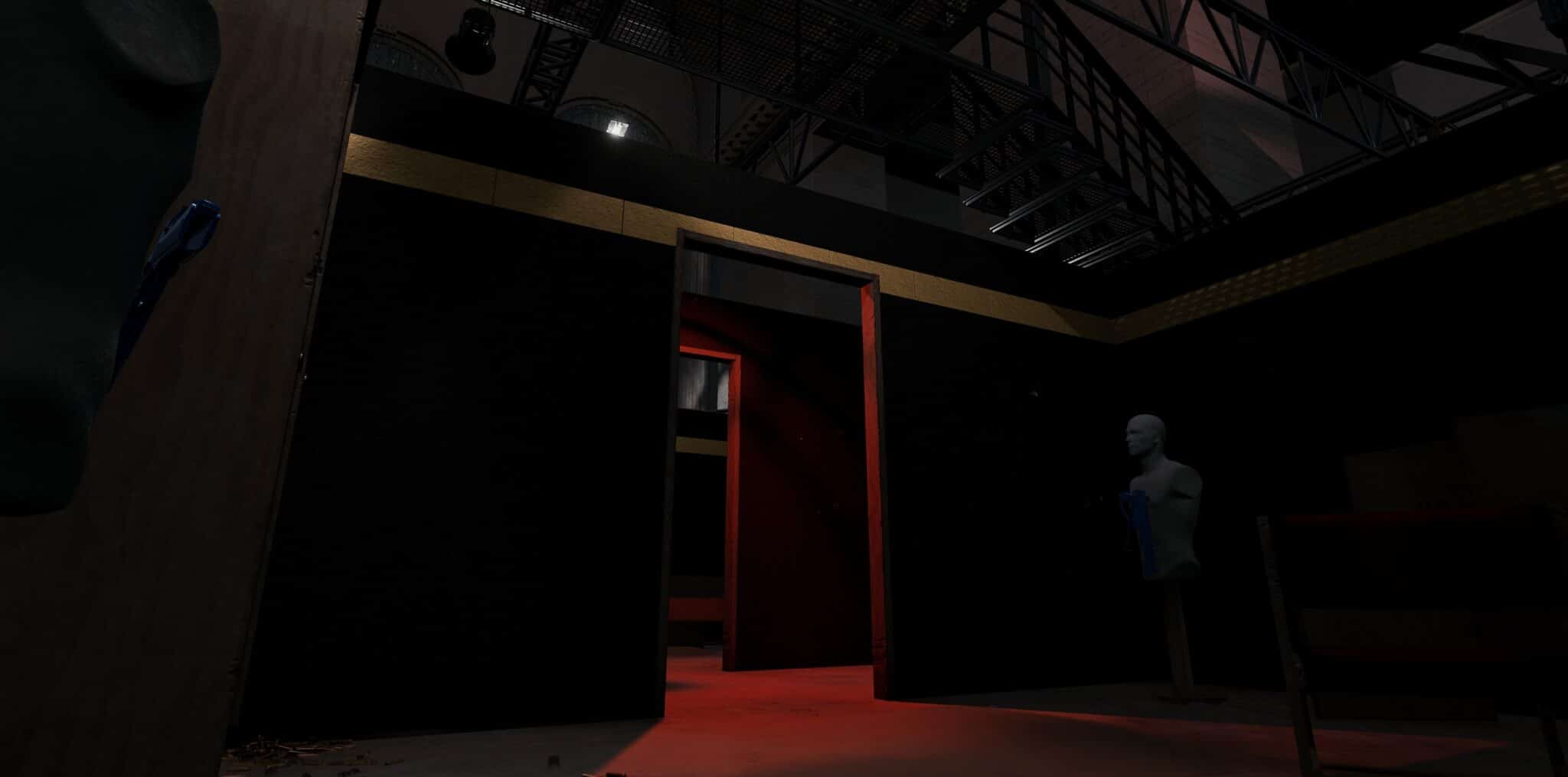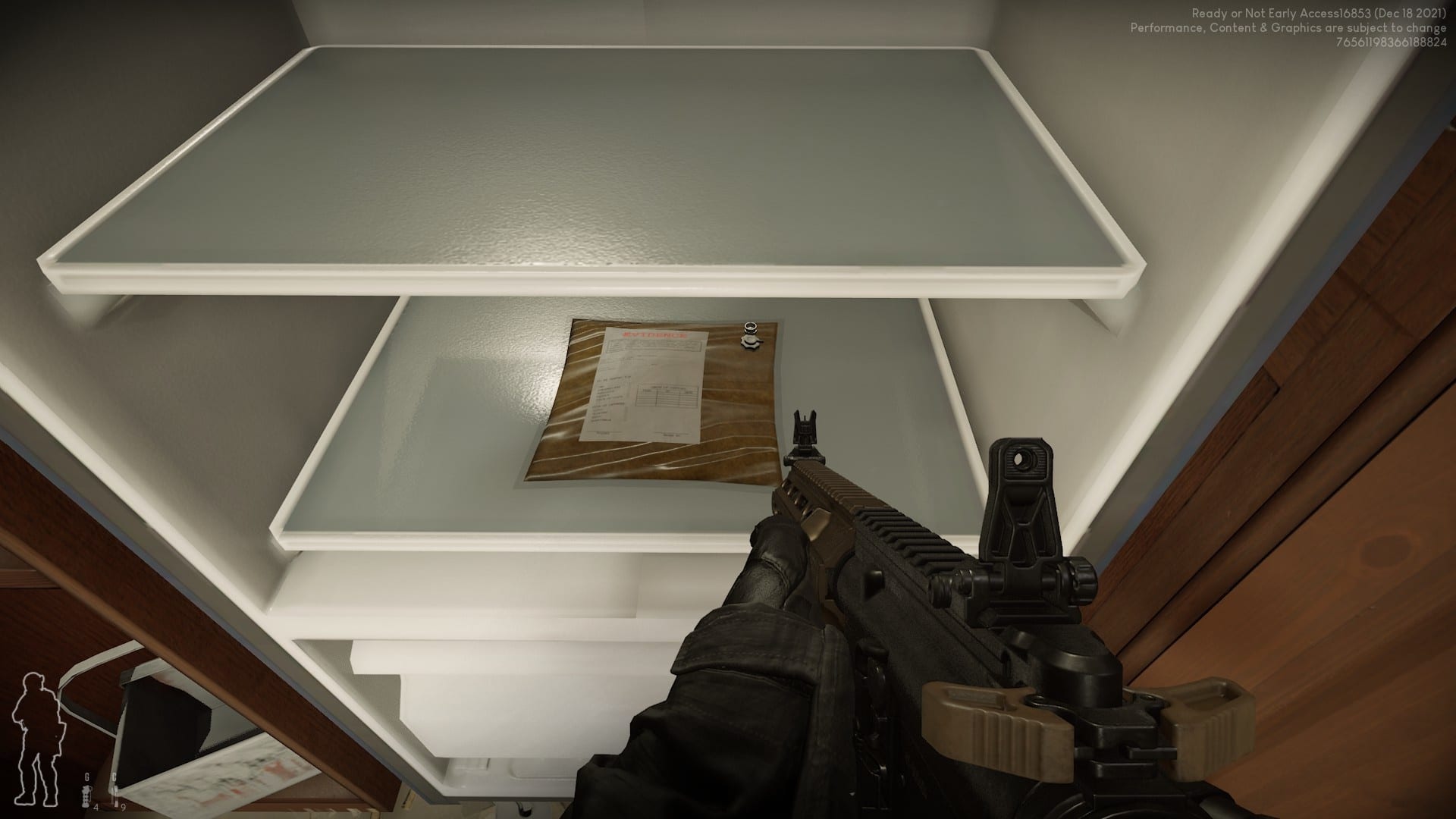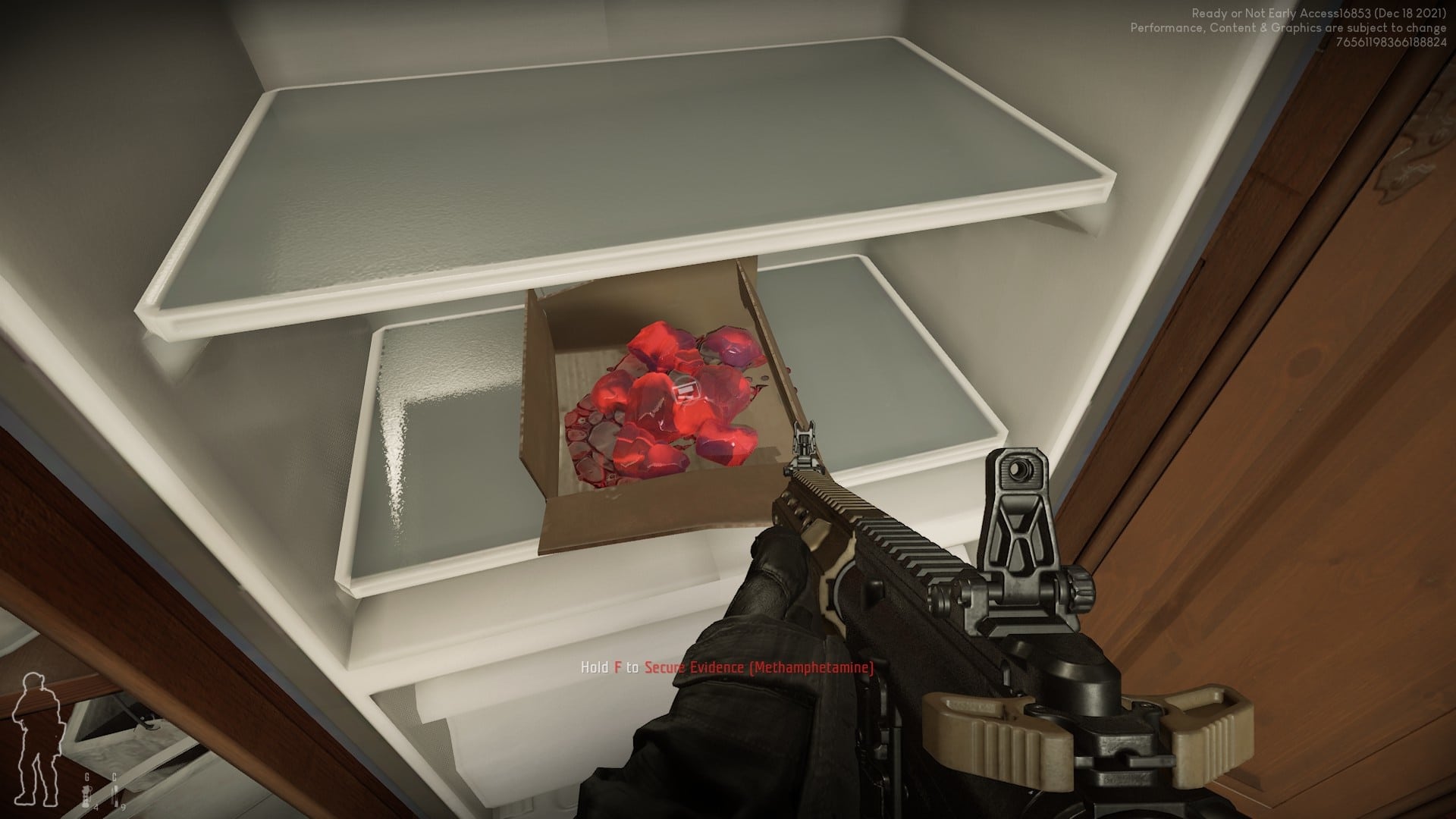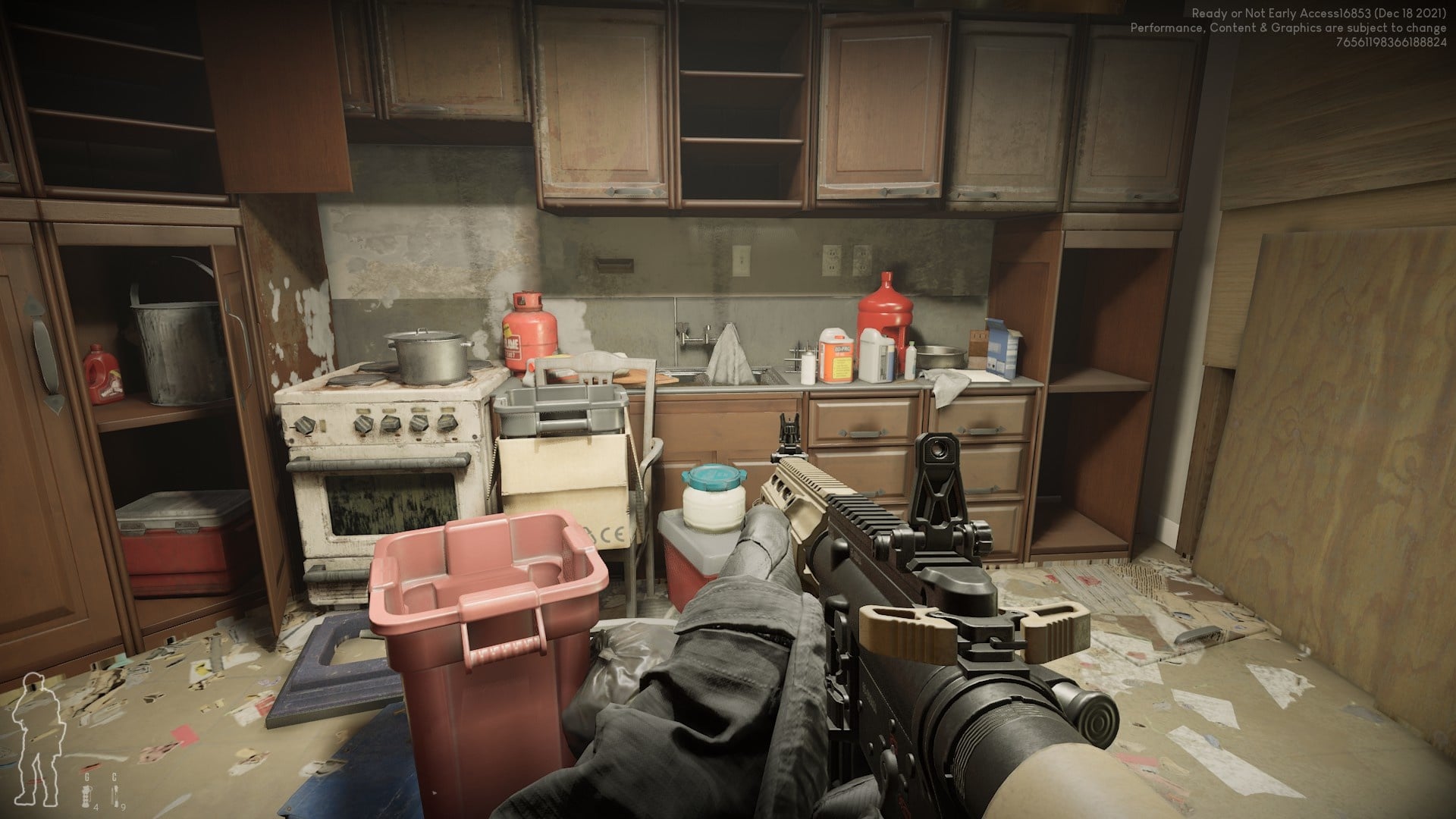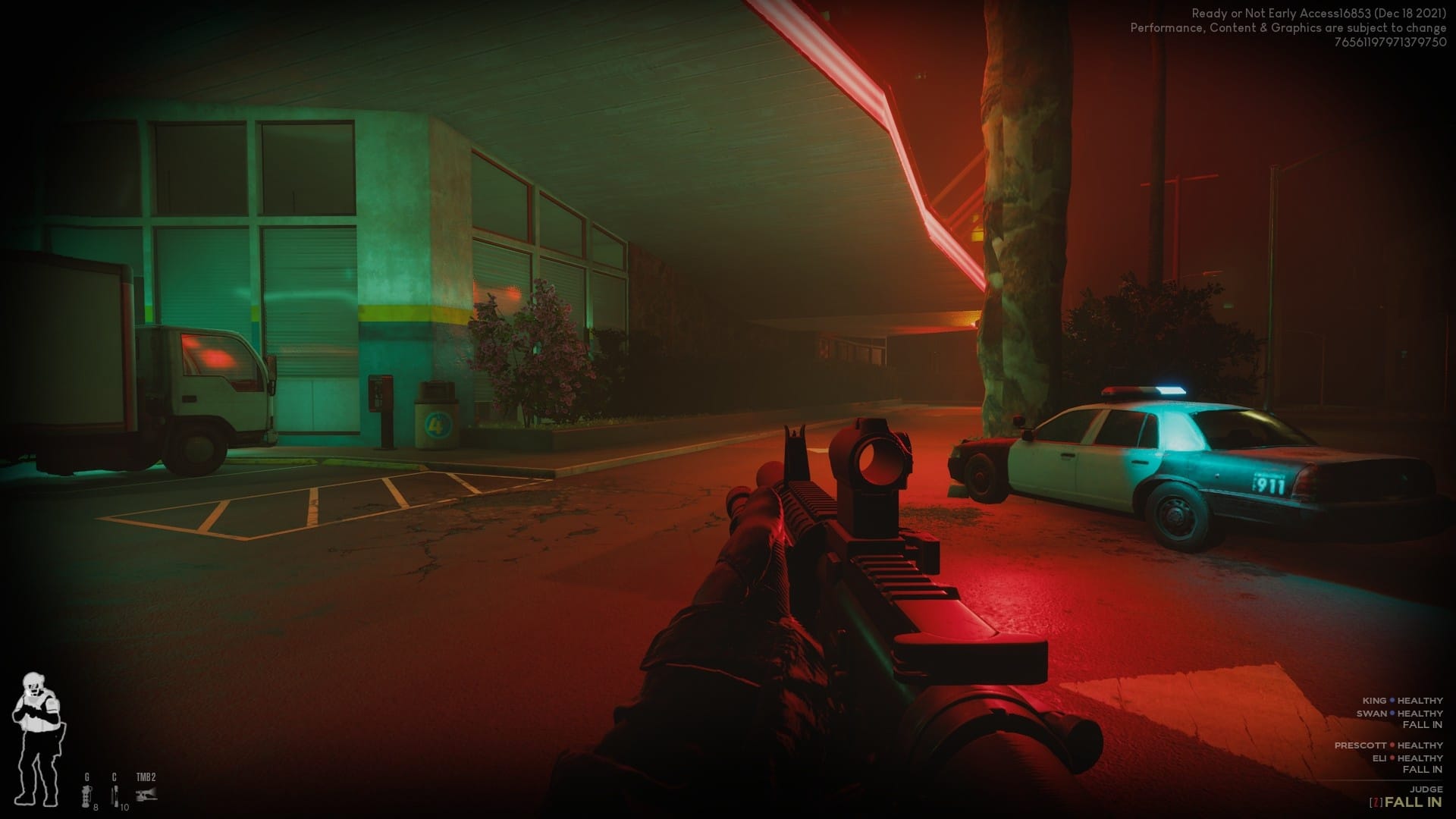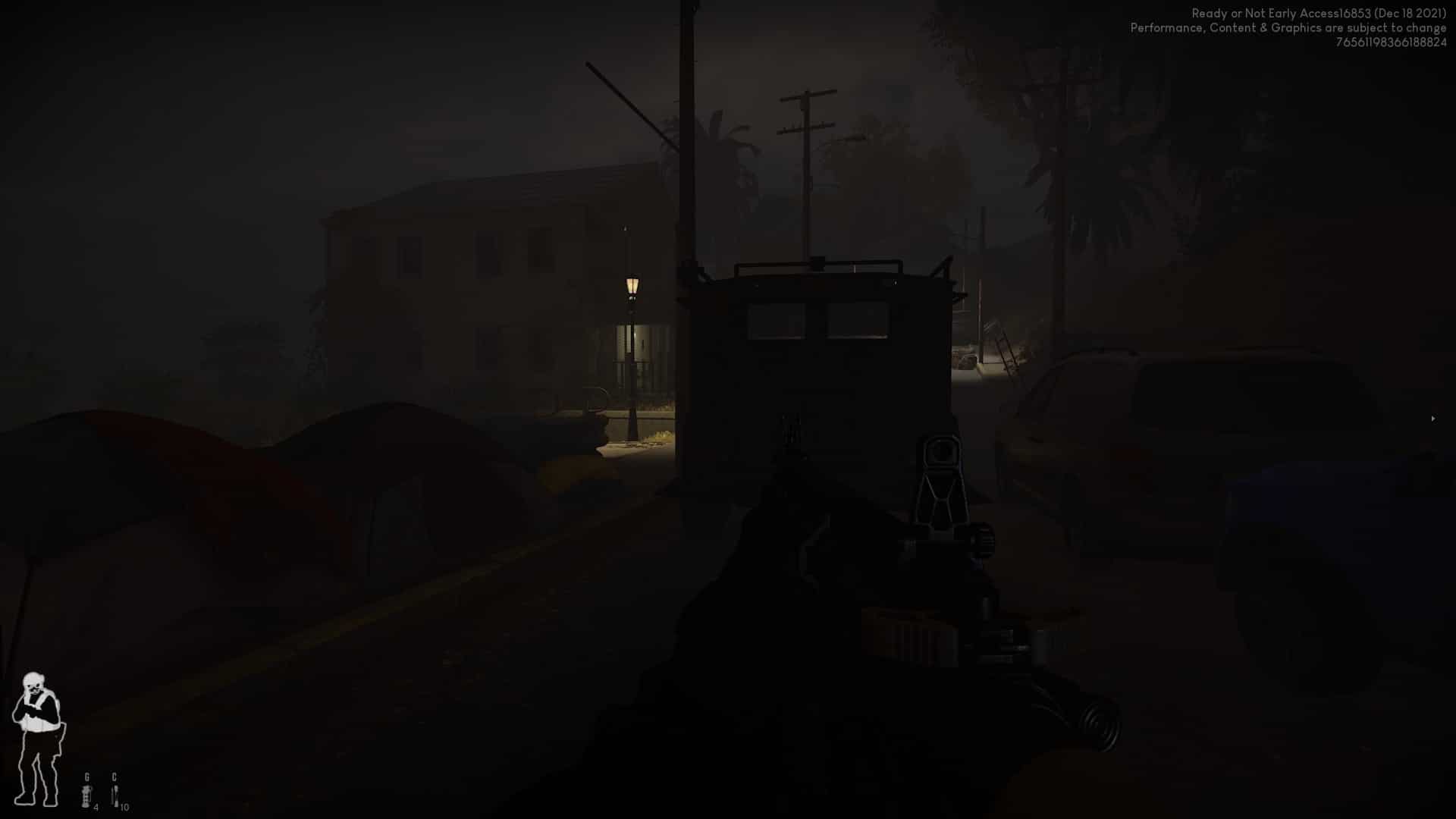Ready or Not is celebrating a big Steam success, but there’s still a lot of sand in the gears after the Early Access release.
When Ready or Not was announced almost five years ago, the title from New Zealand developer Void Interactive was considered by many – including us – to be a shimmering hope in the bleak firmament of tactical shooters. And even about a month after release, 93 percent of the more than 27,000 reviews on (Steam) are positive (as of 19/01/22).
Tactics hit Ready or Not beats out all competitors on Steam – despite sale
This is not going to be a spoiler, quite the opposite. The more we played the game either solo or in cooperative multiplayer with up to four teammates, the more we felt how much potential Ready or Not has.
But if there is one thing we can wish for Ready or Not’s as-yet-unscheduled final release, it’s this: that Void Interactive exploits even half of its potential, thereby raising a tactical shooter that would be unique in this day and age. We wish for a game that delivers what the gameplay trailer from 2019 promises and proves to be a worthy successor to SWAT or the (early) Rainbow Six games. Because we’re still very far from that at the moment, unfortunately.
Table of Contents
We are SWAT
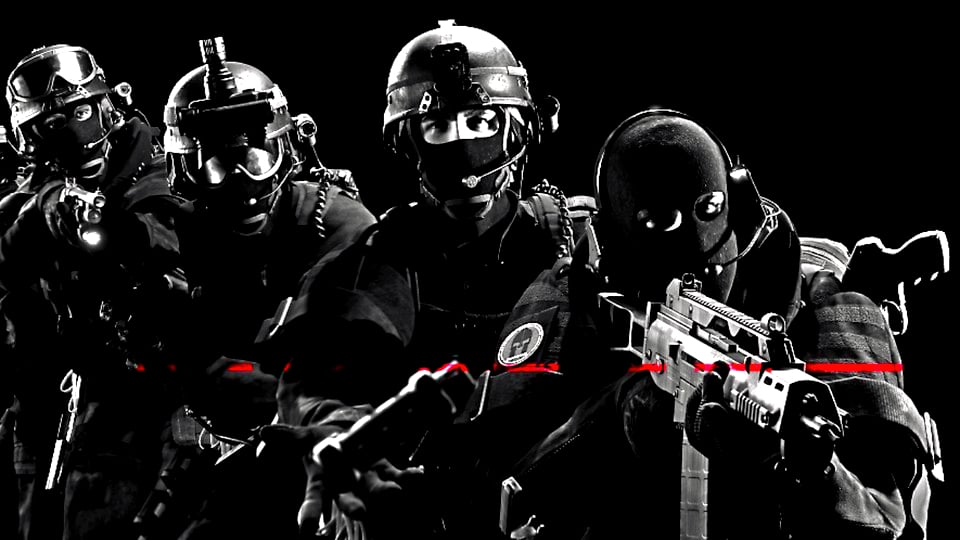
In Ready or Not we slip into the role of an officer of the five-member SWAT team in the first-person view. The abbreviation stands for “Special Weapons And Tactics” and is a special unit of the American police. The experts in counter-terrorism always move in when things like hostage-taking, bomb threats, rampages and the like are involved, comparable to the German SEK (Sondereinsatzkommando).
The fictional US city of Los Suenos is home to our police headquarters. In addition, the metropolis, which is presented as a permanent hotspot for all forms of crime but is otherwise pale, serves as the background for the individual missions. A SWAT team consists of a maximum of five members. We have the option of playing alone and filling the four remaining places with AI colleagues.
In single player, the computer comrades are divided in pairs into Team Red and Team Blue, to whom we give commands in the field either separately or all together via a context-sensitive menu with the middle mouse button. This works very well so far.
There is also a function that lets us string together commands (such as line up, check door, open and clear the room with a stun grenade). However, this is probably not yet fully implemented, because so far we can only give one command and then decide whether it should be executed or the “chain” should be broken.
Intuitive operation
The work with the AI colleagues works well in principle, but the wayfinding still has a few quirks. This is particularly annoying in tight spaces when the team blocks the way and has to be painstakingly rearranged. Ready or Not unfolds its full potential, however, when we go on a mission with human players. Via the main menu, we can decide whether we want to play alone, create a public lobby or a lobby for friends only. Alternatively, we search for freely accessible games.
Every form of game entry is easy to handle and works without a hitch. We can also say the same for the technical side: Ready or Not uses the Unreal Engine 4, runs stably and the game knows how to conjure up some very coherent situations on the screen without offering high-end graphics. Quite noticeable quirks such as untextured objects in actually finished levels, wild water animations in harmless bathtubs and representations of mirrors as if they were a gateway from the Matrix, we want to address here, but due to the Early Access status, we don’t want to hang too high.
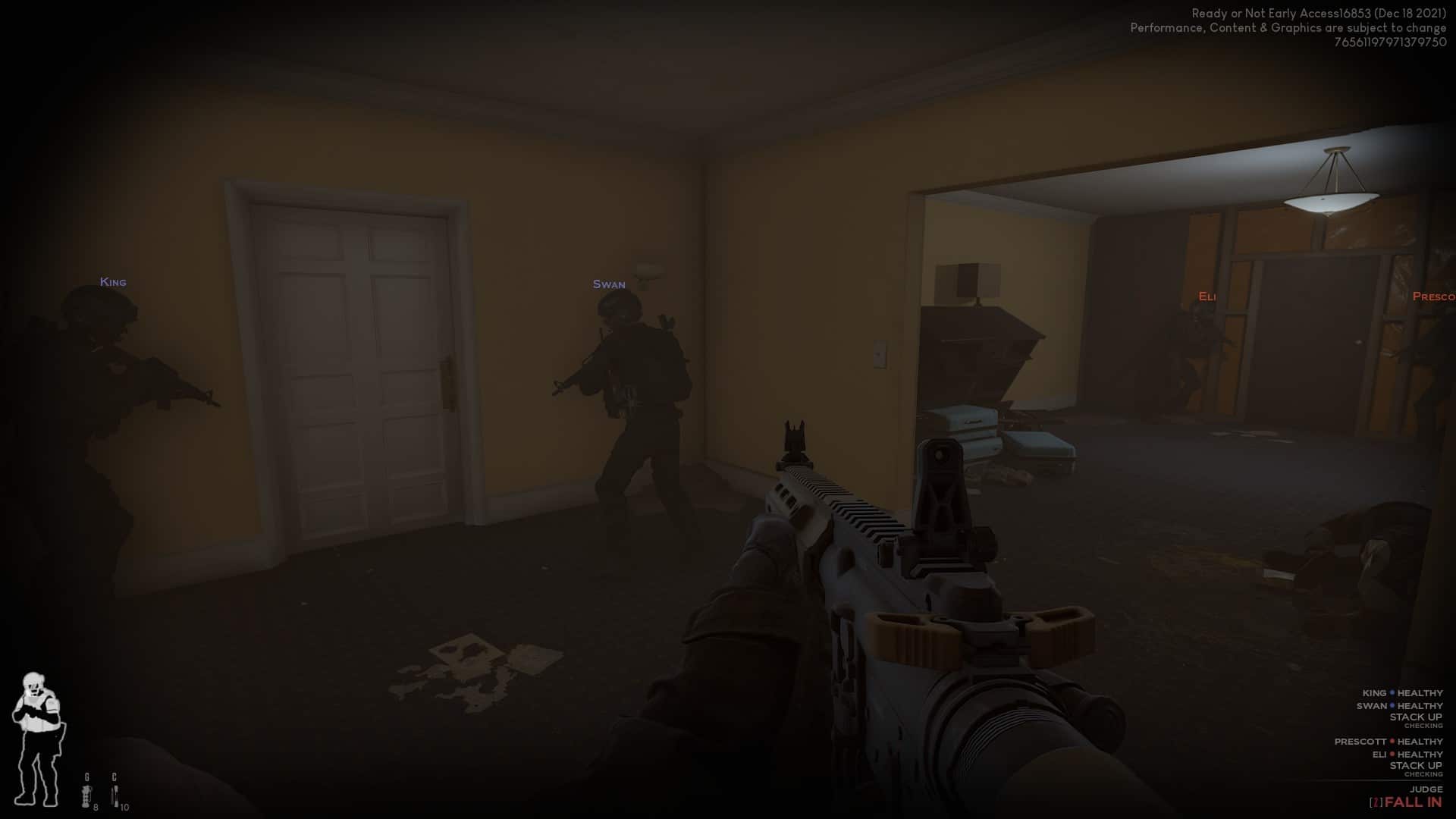
Lobby with style
Whichever game mode we choose, we always start in the very nicely and atmospherically designed headquarters of the SWAT team of Los Suenos. In the police rooms, which are decorated with many small details and extend over two floors, we not only decide on a mission, but also equip ourselves.
While in multiplayer each player decides on their own items and ideally we coordinate with the other players via the integrated VoIP function, solo policemen can also equip the rest of the team with a manageable but sufficient selection of assault rifles, submachine guns and shotguns via the locker.
With secondary weapons, we have the choice of using normal pistols, a stylish magnum or the non-lethal taser to keep law and order. Gadgets for opening doors, three types of grenades and various protective waistcoats as well as helmets round off the options.
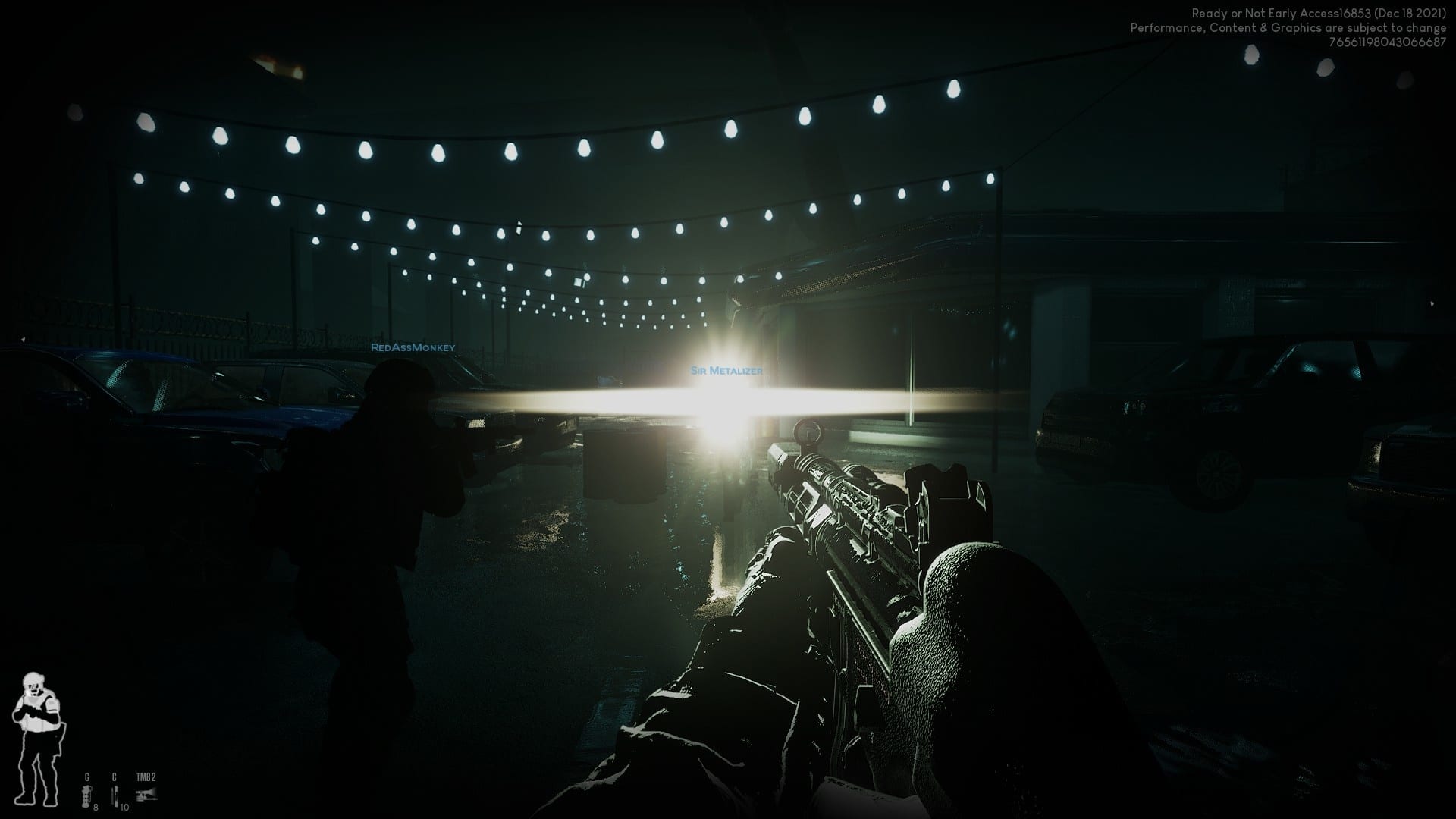
The only stupid thing is that we don’t get specialisations for the weapons in the equipment locker, but from the Quartermaster at the table next door. What is not a problem in multiplayer games is a disaster in single-player mode, because at the table in question we can currently only equip ourselves, but not our colleagues. So when we put a silencer on our assault rifle, the AI still shoots happily and loudly through the area.
That in itself would only be annoying, but not a real disaster. It’s just stupid that there are scenarios in which silent action is obligatory. Because in such a one, if the evil rogues notice us, they start killing hostages. A loud gunfight in the next room is often synonymous with mission failure.
Little variety in Los Suenos
And anyway, we have the impression that Early Access so far only consists of the rudimentary core mechanics. There’s no other way to explain why there’s so much missing at the moment, which constantly ruins our immersion.
As described above, we can customise our equipment. But which items do we need for the missions? We don’t find out anywhere – and it makes no sense at all. After all, we are not embodying patrolmen with standard equipment, but a special unit. This means that when we go on an assignment, there is usually a situation that has developed by the time we arrive. We come when the normal police don’t know what to do. We don’t notice anything about this – neither in the game itself nor in the preparation for the missions.
By clicking on the six missions available so far (and two test levels), we learn roughly which environment awaits us (hotel, penthouse, petrol station, harbour, car dealership, suburban settlement, farm). In addition, before the game starts, we choose one of five scenarios (such as bomb disposal) that will eventually be available for all maps, so that we at least have a small framework of content.
But there is no real briefing: Approximately how many suspects with what armament can we expect? How many hostages are suspected? How many entrances and exits does the building have? All of this is only a small part of the information that real special units have at their disposal before going into action. In a game that wants to be a realistic tactical shooter, something like this cannot be missing. Remember SWAT 3, where we could even see the driving licences of the suspected perpetrators beforehand and witness statements gave us more or less important information on the expected dangerous situation.
Talking about SWAT 3: Especially at the beginning of the campaign, we didn’t mind storming a detached house with two floors and an attic. In the test, the larger maps in Ready or Not seem as if the spaciousness was sometimes forced. On the one hand, this is a matter of taste, of course, and the maps must offer enough space for five players. On the other hand, in combination with the currently still too strong accuracy of the opponents, this can also lead to a game-mechanical problem, but we will discuss this in more detail below.
Mission sequence with a lot of room for improvement
Even at the beginning of the mission we don’t feel like part of a special unit, because we are standing with our colleagues at the deserted starting point of the map. No barriers, no sirens, no blue lights, simply nothing to indicate that a crime is taking place here and that we should solve the tricky situation.
With a lot of imagination, one can argue that we want to catch the suspected operators of a drug lab in the act on the suburban map, but even there the scenery is downright bizarre. Here we also had the frustrating experience on several occasions of being shot by random enemies spawned nearby immediately after starting a mission.
The game does not tell a story within the missions either, so that the missions sometimes seem arbitrary, generic and boring. To refer again to SWAT 4 as a model in spirit: Here, for example, during the mission in the bank, we could deduce from the surroundings what had happened, such as how the gangsters gained access. Such elements are completely missing in Ready or Not. In front of the petrol station map there are two alibi police cars with blue lights, which look just as lost as we do when we enter the game next to the tents of the homeless at the side of the road. That’s it.
As we then cross the petrol station forecourt on said map and look for a suitable entrance – as we had no briefing – we struggle with the next design decision. We can’t run.
Since the focus is on realism, we can only walk slowly and press the shift key to walk even slower (“Walk! Walk! Walk!” instead of “Go! Go! Go!”). This is how the developers prevent the SWAT cops from moving across the maps in Call-Of-Duty style, yet we notice the lack of movement speed negatively in several places right away.
On large open areas, we are a sitting duck, especially in the scenarios with higher enemy aggressiveness. When we have to cross areas that have already been cleared without knowing the map – because we had no briefing – the distances seem endless. In bombing scenarios, where literally every second counts, this is doubly annoying.
Finally, we simply miss the ability to sprint to safety. Not only can the enemies run, but they also cleverly surprise us from behind. Because of a precision that sometimes makes every Aimbot user jealous, we often don’t know what’s happening to us. The fact that we can’t even quickly retreat from danger makes things unnecessarily frustrating.
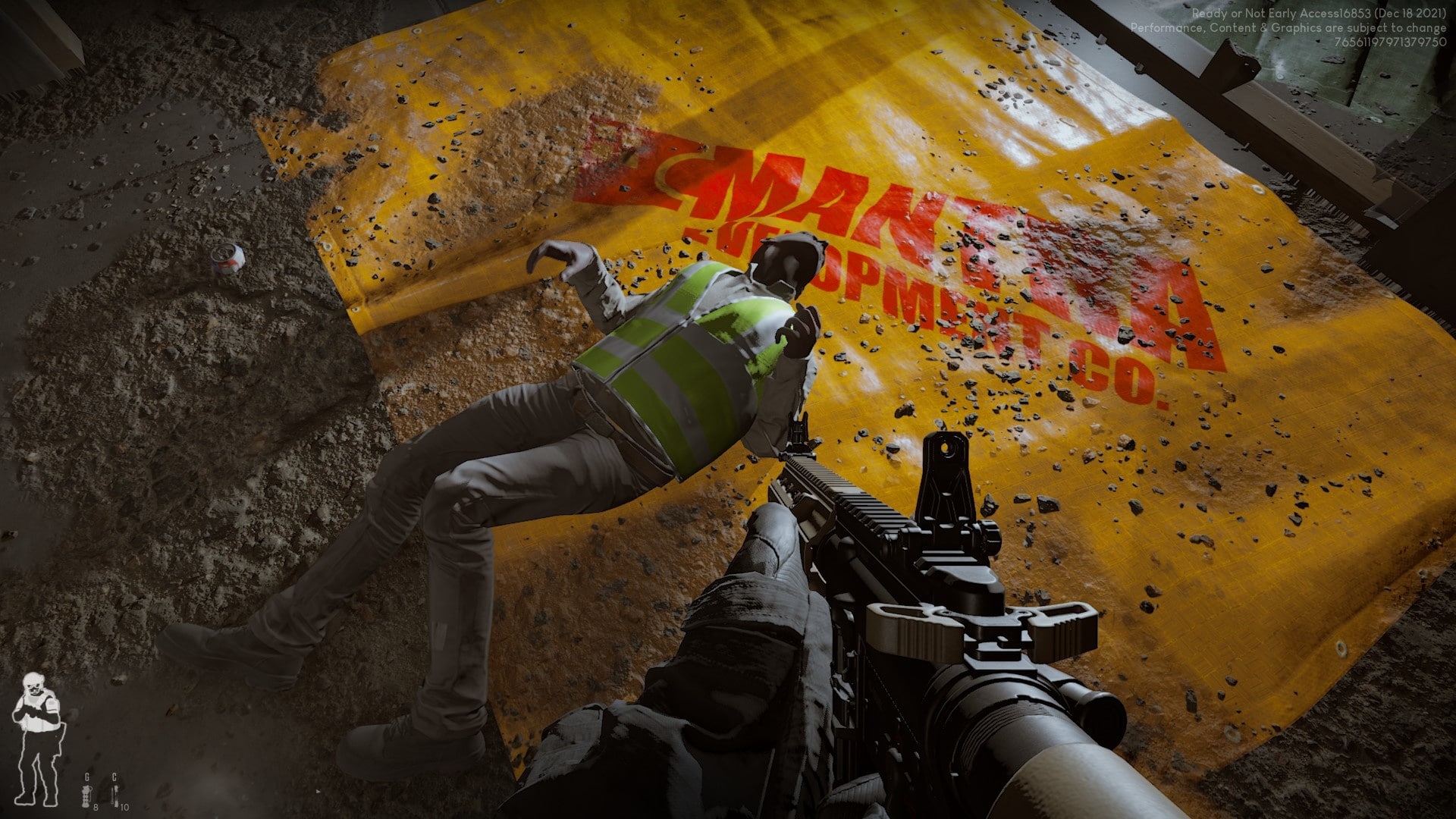
The brutal marksmanship of the AI is currently a big issue among gamers. A hardcore tactical shooter, as Ready or Not wants to be, should of course be hard. The fact that we go down after a few hits and the AI is not very forgiving is perfectly fine. As part of the fine-tuning, however, it certainly wouldn’t hurt if the AI’s hit accuracy were corrected downwards a little so that the “WTF deaths” that come out of nowhere no longer cause countless question marks above our heads. Developer Void Interactive wants to address this issue in one of the upcoming updates.
Especially in combination with the extensive maps and the lack of a save function during a mission, this can lead to frustration. If you spend an hour tacticking your way through enemy territory, you will probably praise the game less for its supposed “realism” when you are shot in the head from the next room.
We have used the example of the missing running step here as an example of all the small inconsistent details that do not weigh heavily in themselves, but in total have a negative effect on the game experience. This is a pity, because the New Zealand studio shows a very good eye for small details elsewhere.
The fact that the clock in the lobby ticks in real time, that weapons have an adjustable safety in addition to single shot and automatic mode, that the filling level of magazines can be displayed and that criminals receive a small slap from our character when they are arrested – these are great little ideas that not only give the game more depth, but also show how much thought the team puts into it.
Torn between
Tackling the criticisms raised and either fixing them or tweaking the rest of the game to address the design decision is not witchcraft. This makes us optimistic that Ready or Not can be the big hit after all. For despite all the hair pulling, there are moments that captivate and fascinate us. When we’re lined up in front of a door, covering each other, looking under the door with the mirror and hatching the perfect plan to storm in and capture everyone alive, we’re right in the middle of it.
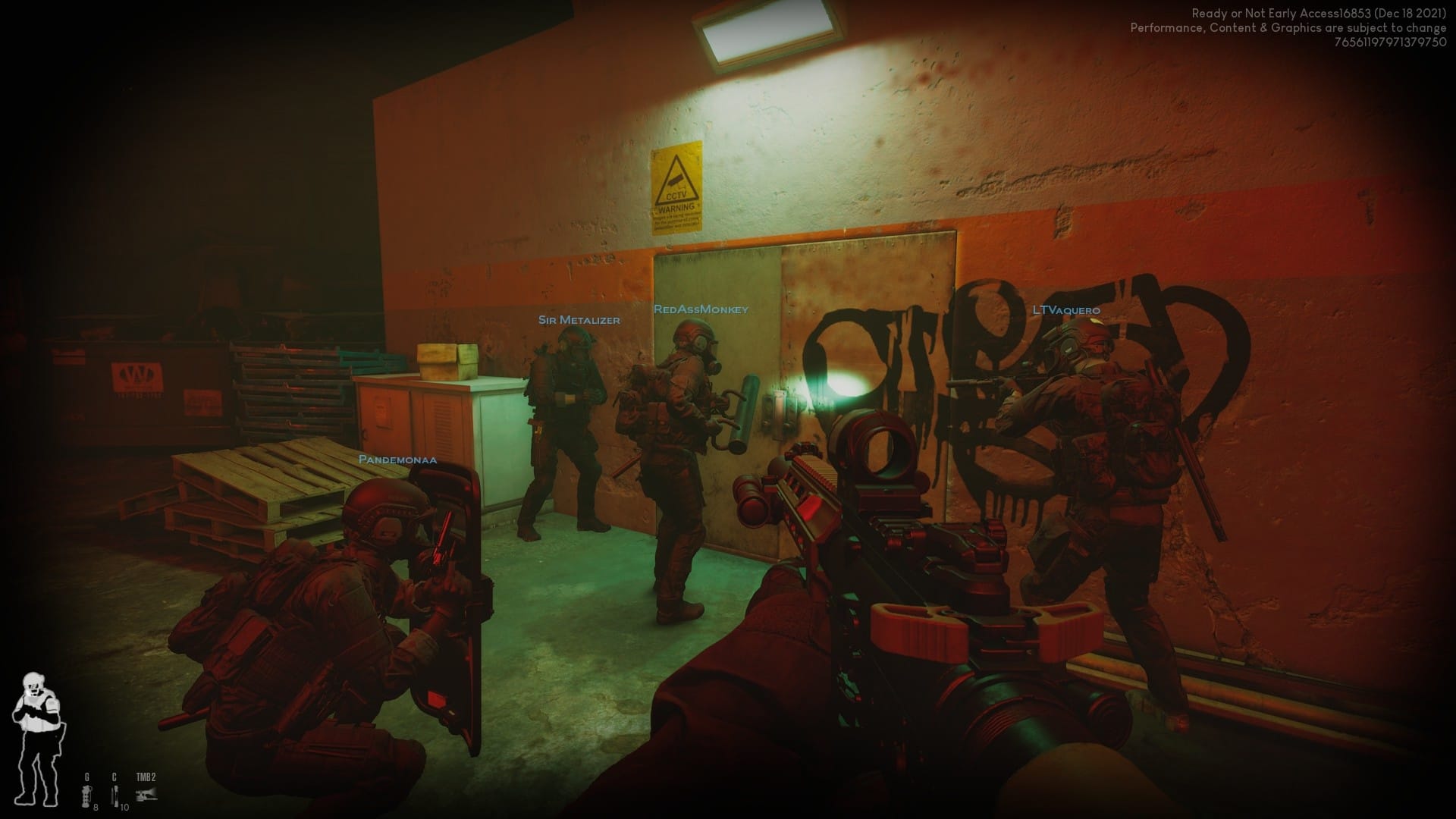
The game gives us several options: Do we want to choose said method with the mirror? Or do we shoot the lock open with the Breaching Shotgun, throw tear gas and stun grenades after it and charge towards the stunned enemies yelling “hands up and drop your weapons”? Our approach has to be well thought out, because traps with explosive or stun grenades are randomly distributed on the map. This is positive in terms of replay value, but then it also leads to such absurd situations as a hostage sitting in a small, locked storage room with a booby trap on the inside.
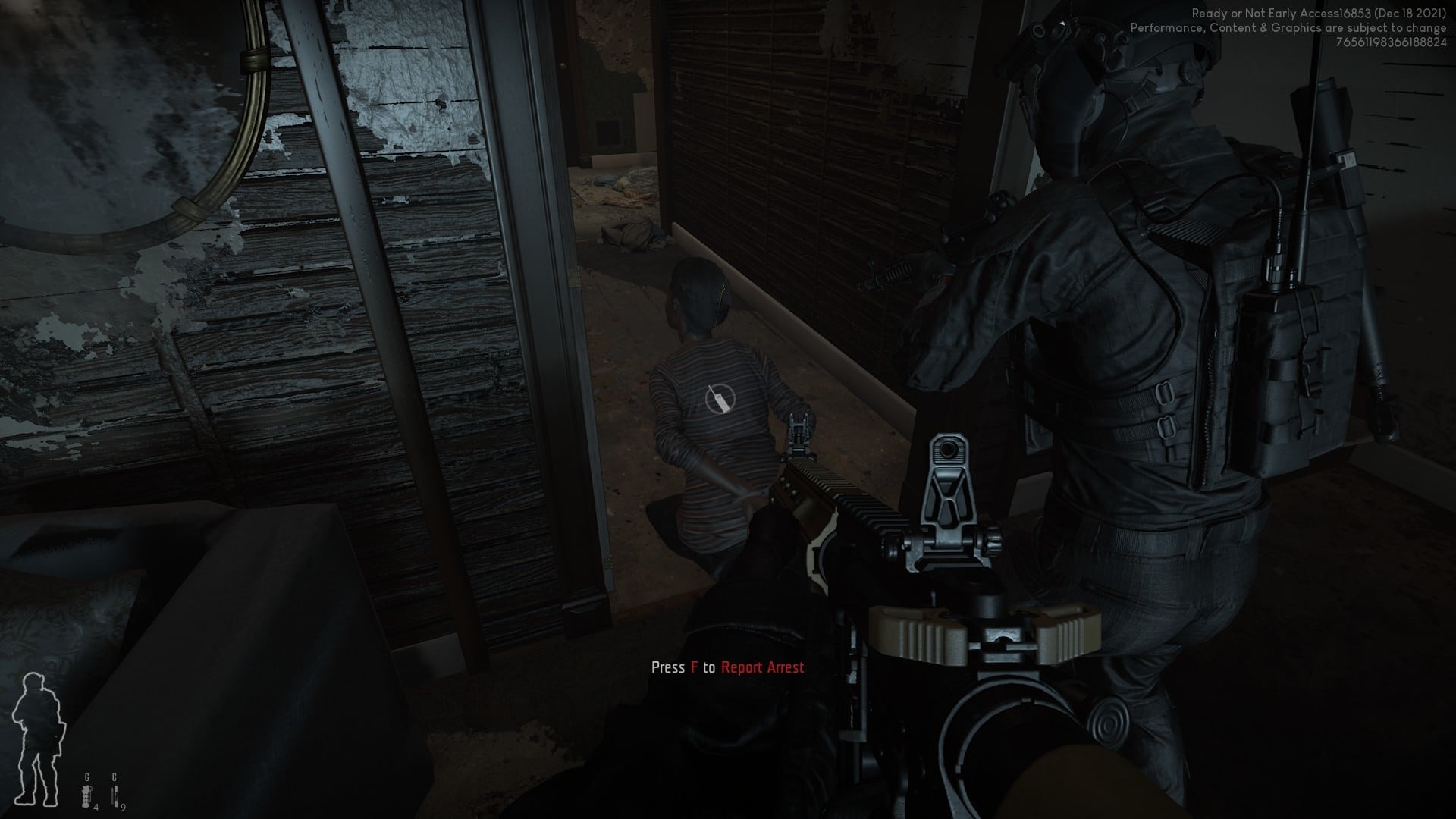
Also, the immersion breaks again and again: hostages take flight from us or move freely. Sometimes we meet them outside in open areas and then they “escape” to the terrorists. We take civilians into custody and then hear stupid things like “Uh, nice tattoos!” – even though we’re in full gear, don’t have any tattoos and the comment is pretty much the last thing that would be understandable in a situation like that. Yes, then we undoubtedly think, and despite all the good ideas as well as already working game mechanics, that Void Interactive still has a lot of work to do.
Hardcore tactical shooter Ready or Not shows what happens next in 2022
Editor’s Verdict
No test has been as difficult for me as the one for Ready or Not. Yes, the game is merely in the Early Access stage. Yes, the release was probably spontaneous and yes, publisher Team 17 bailed at short notice. These are all factors that certainly do not have a positive effect on the current quality of the game. On the other hand, the game has been very well received by fans and many critics. However, it is my job to evaluate the current state of a game and to fade out the circumstances as far as possible. Therefore, I have to say at this point – also in relation to what the game wants to be – that it is too little.
It’s true that the core mechanics – working your way tactically through areas – work quite well in single and multiplayer, the gun battles are usually fun despite the frustrating accuracy of the enemies, and the graphics sometimes create coherent situations. But almost everything else permanently pulls me out of the game. Why can I equip my AI colleagues but not hand out gadgets? Why do I, as a special police unit, not receive a briefing on the basis of which I can coordinate my equipment? Why do the scenarios seem arbitrary and haphazard? Why do I start on an empty map without the scenery of a police operation? Why do I feel that there are only a handful of character models for enemies and civilians, when the developer’s claim is to create an organic world with individual characters? Why can’t I sprint in missions with a time limit? Why can I easily walk through windows, but grenades bounce off the glass?
I, too, am one of the “starved” fans of SWAT & Co. Incidentally, I see this as one of the main reasons for the current success of Ready or Not. And the potential to become the expected hit is running out of Ready or Not’s ears left and right. And yet I find it hard to join in the ongoing hymns of praise. The fact that the game’s justly praised mechanics are severely underrepresented in the current gaming landscape is certainly a factor in Ready or Not’s success. Nevertheless, I have to say clearly that this mechanic does not yet work properly and much around it is either not yet finished or at best shows a perspective.
For the sake of all the fans, and not least myself, I hope that development progresses well and that at some point we do indeed have a worthy heir to SWAT 4 in our hands with Ready or Not. Until then, I remain sceptical.

